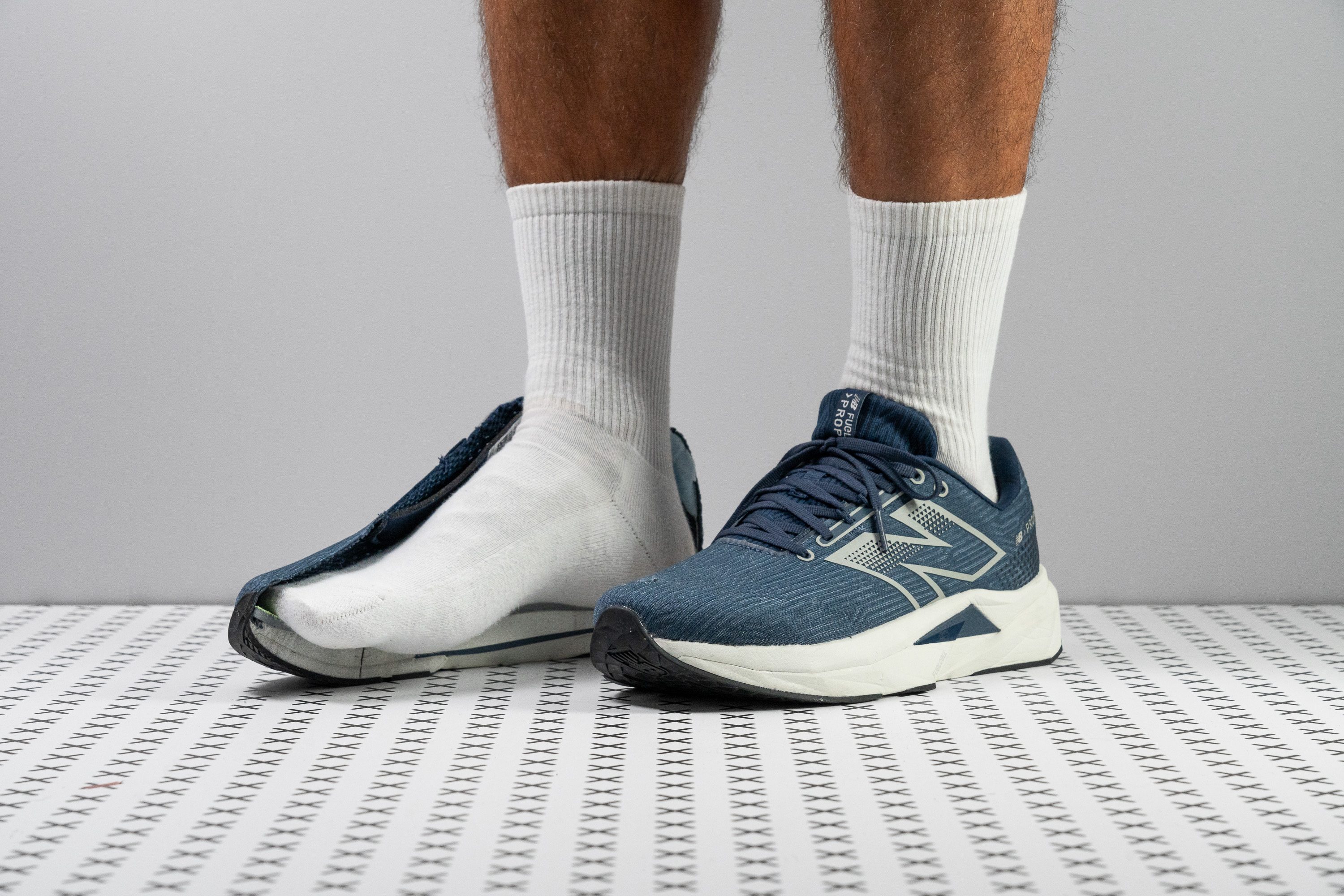Nuestra conclusión
Pros
- Mediasuela FuelCell muy mullida
- Upper muy transpirable
- Placa de TPU que se centra en la estabilidad
- Ideales para los corredores de mediopié
- También son aptas para el uso diario
- Se pueden utilizar para entrenamientos de tempo
- Más asequibles que otros modelos del estilo
- Cada vez pesan menos
Contras
- Poco duraderas
- No son las mejores para los talonadores
- La suela exterior atrapa piedrecitas
- La suela exterior atrapa piedrecitas
Veredicto de los usuarios
Comparativa
Las zapatillas de running más parecidas
+ + Añadir unas zapatillas | |||||
|---|---|---|---|---|---|
| Puntuación global | 80 Buenas | 84 Buenas | 89 Notables | 89 Notables | |
| Precio | 130 € | 115 € | 130 € | 140 € | |
| Pace | Correr a diarioTempo / series | Correr a diario | Correr a diario | Correr a diario | |
| Absorción de impactos | Alta | Moderada | Moderada | Alta | |
| Retorno de energía | Moderado | Moderado | Moderado | Bajo | |
| Tracción | Moderada | Alta | Moderada | Moderada | |
| Arch support | Neutral | Neutral | Neutral | Neutral | |
| Peso laboratorio Peso marca | 9.5 oz / 269g 9.7 oz / 275g | 9.2 oz / 261g 9.5 oz / 268g | 10.1 oz / 285g 9.8 oz / 277g | 9.7 oz / 274g 9.5 oz / 270g | |
| Drop laboratorio Drop marca | 6.7 mm 6.0 mm | 7.8 mm | 7.0 mm 6.0 mm | 10.5 mm 5.0 mm | |
| Técnica de carrera | Medio/antepié | Medio/antepié | TalónMedio/antepié | Talón | |
| Talla | Tallan un poquito pequeño | Tallan un poquito pequeño | Tallan bien | Tallan bien | |
| Rigidez de la mediasuela | Blanda | Blanda | Equilibrada | Blanda | |
| Diferencia de la rigidez de la mediasuela en frío | Normal | Normal | Normal | Normal | |
| Durabilidad de la parte delantera | Mala | Buena | Decente | Mala | |
| Durabilidad del acolchado del talón | Baja | Alta | Media | Media | |
| Durabilidad de la suela exterior | Decente | Buena | Mala | Buena | |
| Transpirabilidad | Alta | Alta | Media | Alta | |
| Anchura / ajuste | Media | Media | Media | Media | |
| Anchura de la parte delantera | Media | Media | Media | Media | |
| Flexibilidad | Moderada | Flexible | Moderada | Moderada | |
| Rigidez torsional | Moderadas | Flexibles | Moderadas | Rígidas | |
| Rigidez del contrafuerte del talón | Moderado | Moderado | Moderado | Rígido | |
| Rocker | ✗ | ✗ | ✓ | ✗ | |
| Talón laboratorio Talón marca | 35.2 mm 37.0 mm | 35.4 mm | 36.8 mm 31.0 mm | 40.7 mm 40.0 mm | |
| Antepié laboratorio Antepié marca | 28.5 mm 31.0 mm | 27.6 mm | 29.8 mm 25.0 mm | 30.2 mm 35.0 mm | |
| Anchuras disponibles | EstándarAncho | EstándarAnchoExtra Ancho | Estándar | EstándarAncho | |
| Orthotic friendly | ✓ | ✓ | ✓ | ✓ | |
| Estación | VeranoTodas las estaciones | VeranoTodas las estaciones | Todas las estaciones | VeranoTodas las estaciones | |
| Removable insole | ✓ | ✓ | ✓ | ✓ | |
| Clasificación | #312 16% inferior | #244 34% inferior | #87 Top 24% | #104 Top 28% | |
| Popularidad | #190 49% inferior | #29 Top 8% | #257 31% inferior | #242 35% inferior |
Quién debería comprárselas
Creemos que las New Balance FuelCell Propel v5 son:
- Fantásticas para los corredores que están buscando una pisada mullida y que les recuerde a una nube, pero sin tener que pagar un ojo de la cara. ¡Sobre todo si son corredores de mediopié!
- Perfectas para los fans del diseño geométrico actual de New Balance que quieren un par de entrenamiento diario eficaz con un precio que no les eche para atrás.
- Ideales como zapatillas "todo en uno", ya que rinden bien en varias distancias y ritmos, desde carreras largas y sencillas hasta entrenamientos exigentes de velocidad.
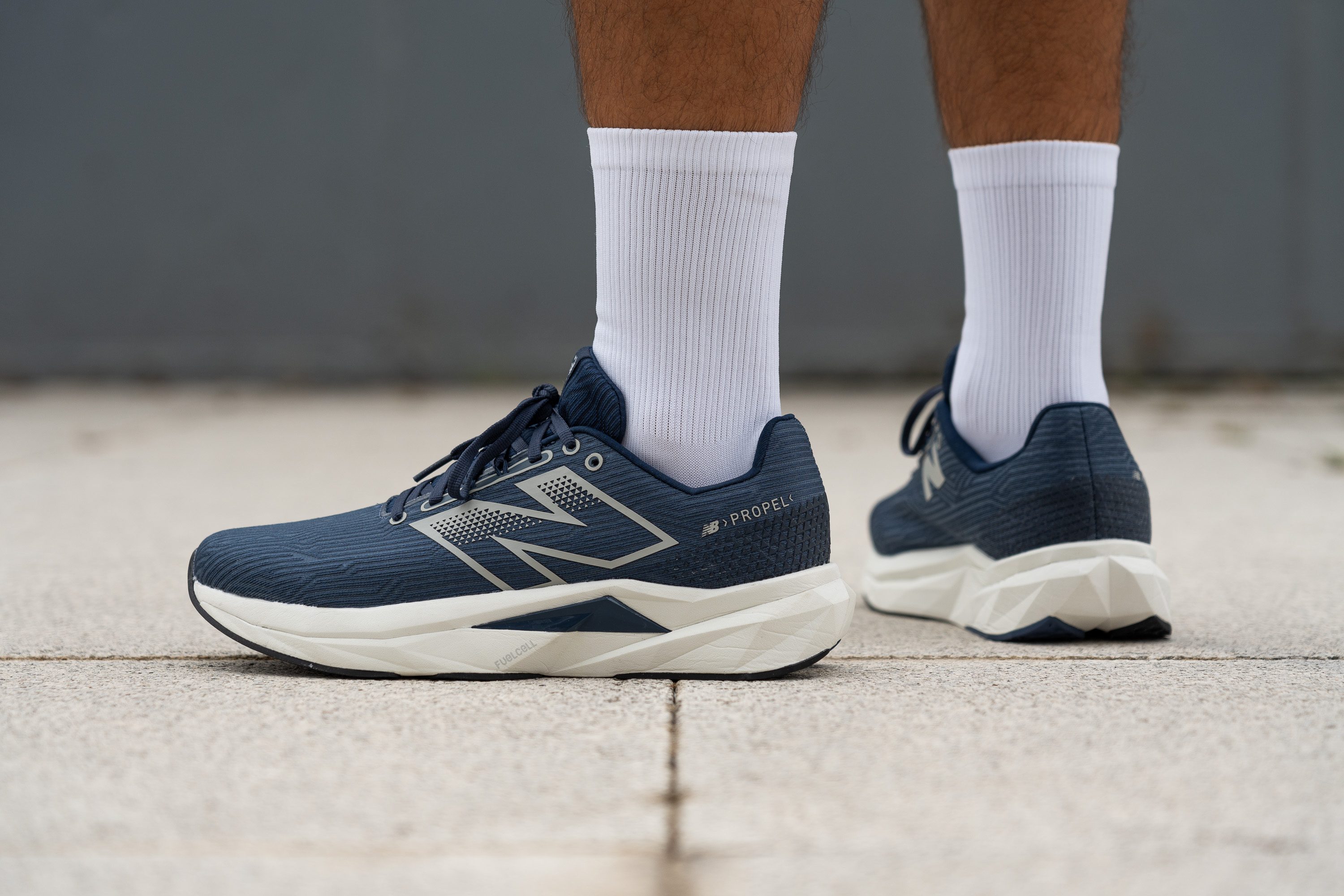
Quién NO debería comprárselas
Además, hemos llegado a la conclusión de que la parte delantera de las Propel v5 puede ser un inconveniente importante para los que prefieren un ajuste más espacioso. Si quieres algo que les deje un poco más de espacio a tus pies, te recomendamos que les eches un ojo a las Adidas Adizero SL2 o a las New Balance FuelCell Rebel v4, que tienen una parte delantera más ancha y, además, también son más estables por eso mismo.
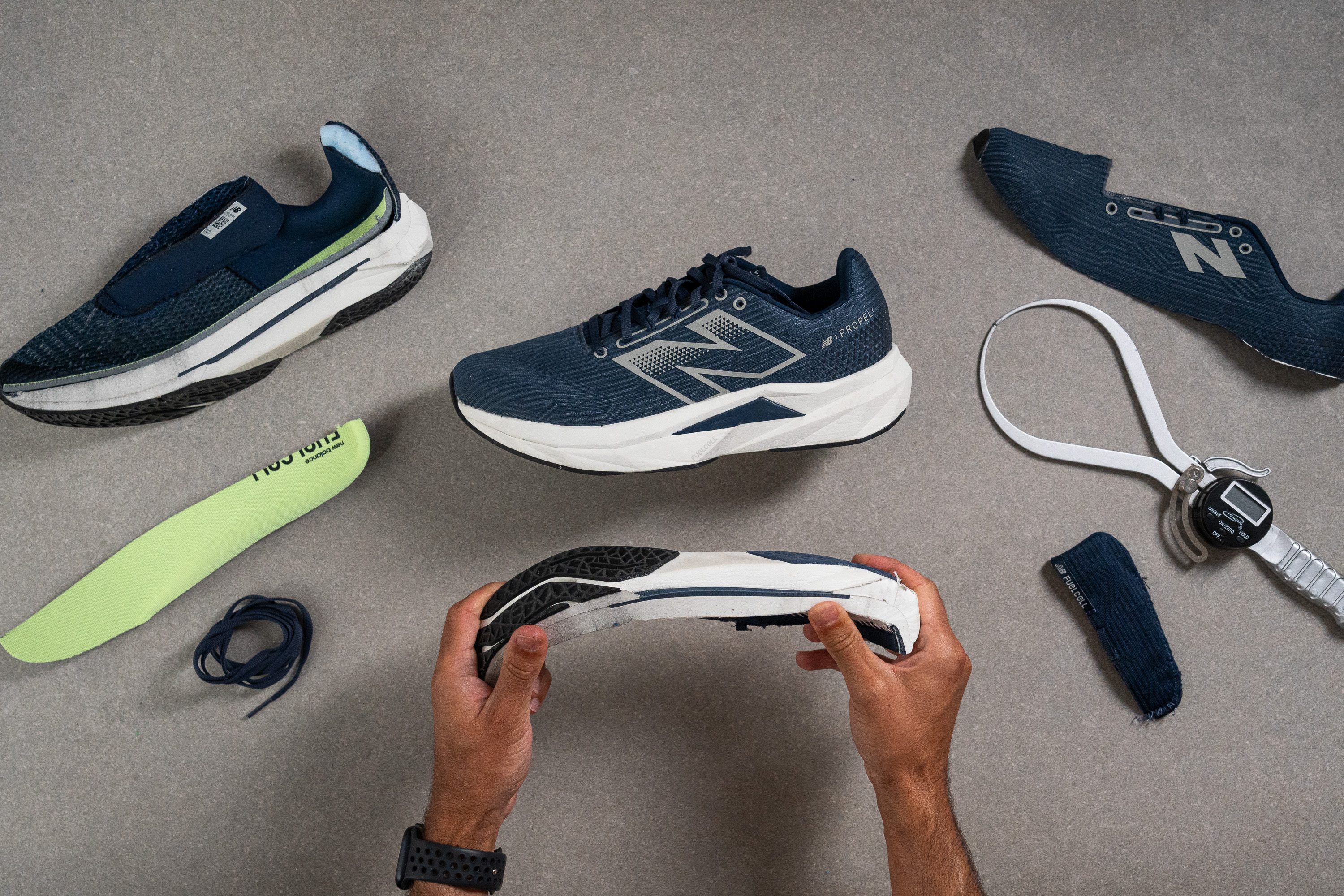
Amortiguación
Shock absorption
La absorción de impactos de las anteriores Propel nos dejó impresionados, y esta 5ta versión la mejora incluso más. Esto hace que sea una opción estupenda para las distancias largas si no te quieres gastar un ojo de la cara, y también rinden bien en los esfuerzos cortos.
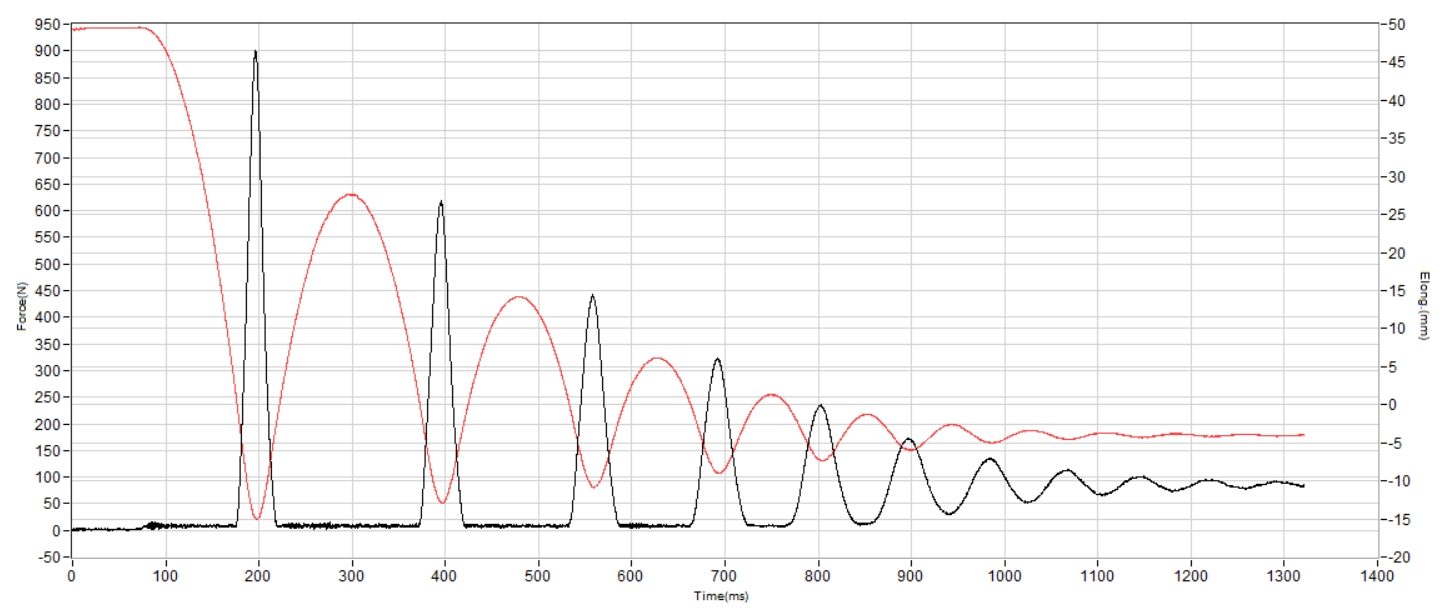
| FuelCell Propel v5 | 143 SA |
| Media | 129 SA |
Energy return
Como la mediasuela no ha cambiado desde la versión anterior, el retorno de energía es prácticamente el mismo. Medimos un 58,2 % en el talón y un 62,5 % en el antepié, que es una cifra cerca de la media, pero bastante impresionante si tenemos en cuenta que estamos hablando de un modelo económico.
| FuelCell Propel v5 | 58.2% |
| Media | 58.5% |
Altura de la suela en la zona del talón
Las Propel v5 cuentan con una amortiguación en el talón de 35,2 mm que ofrece un nivel de comodidad que rivaliza con el de otras zapatillas mucho más caras.
Este generoso acolchado proporciona una sólida protección contra el suelo, por lo que es adecuado incluso para los corredores más corpulentos. Lo comprobamos corriendo con ellas, así que podemos decirte de primera mano que su amortiguación no se queda corta ni siquiera después de 16 km.
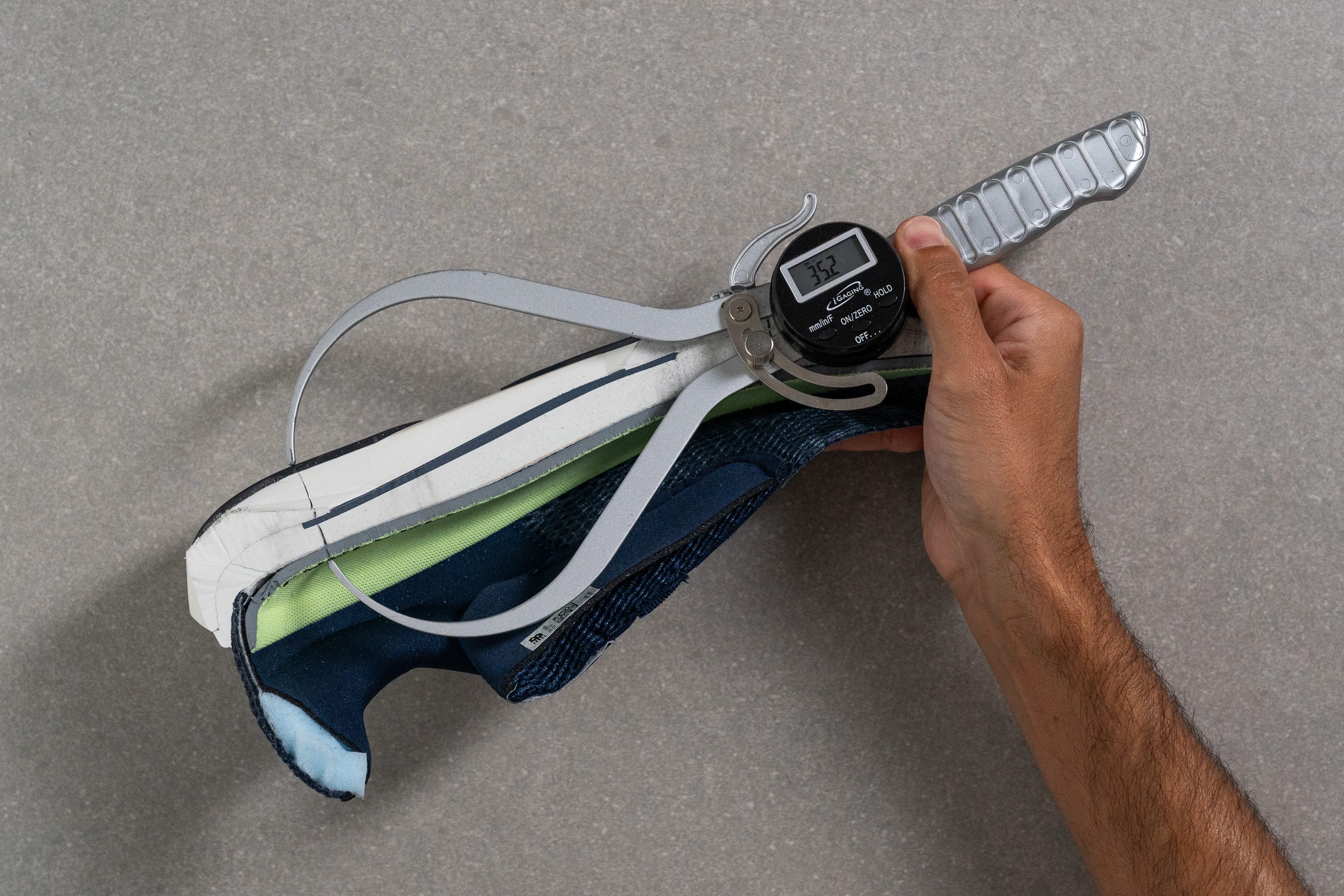
| FuelCell Propel v5 | 35.2 mm |
| Media | 34.8 mm |
Altura de la suela en el antepié
La altura de la suela en el antepié de las Propel v5 llega a los 28,5 mm, lo que las hace ideales para los corredores que se enfrentan a cualquier distancia, sobre todo si impactan con el antepié o el mediopié. Por lo tanto, podemos confirmarte que este modelo también proporciona una amortiguación superior a la media en la zona de los dedos.

| FuelCell Propel v5 | 28.5 mm |
| Media | 26.2 mm |
Drop
Hemos calculado que el drop de estas zapatillas es de 6,7 mm, así que sigue fielmente a los 6 mm que afirmaba New Balance en su página oficinal.
Como hemos dicho antes, el diseño de las Propel v5 las hace muy adecuadas para los corredores de mediopié no solo por su drop medio, sino también por el diseño específico de su placa.
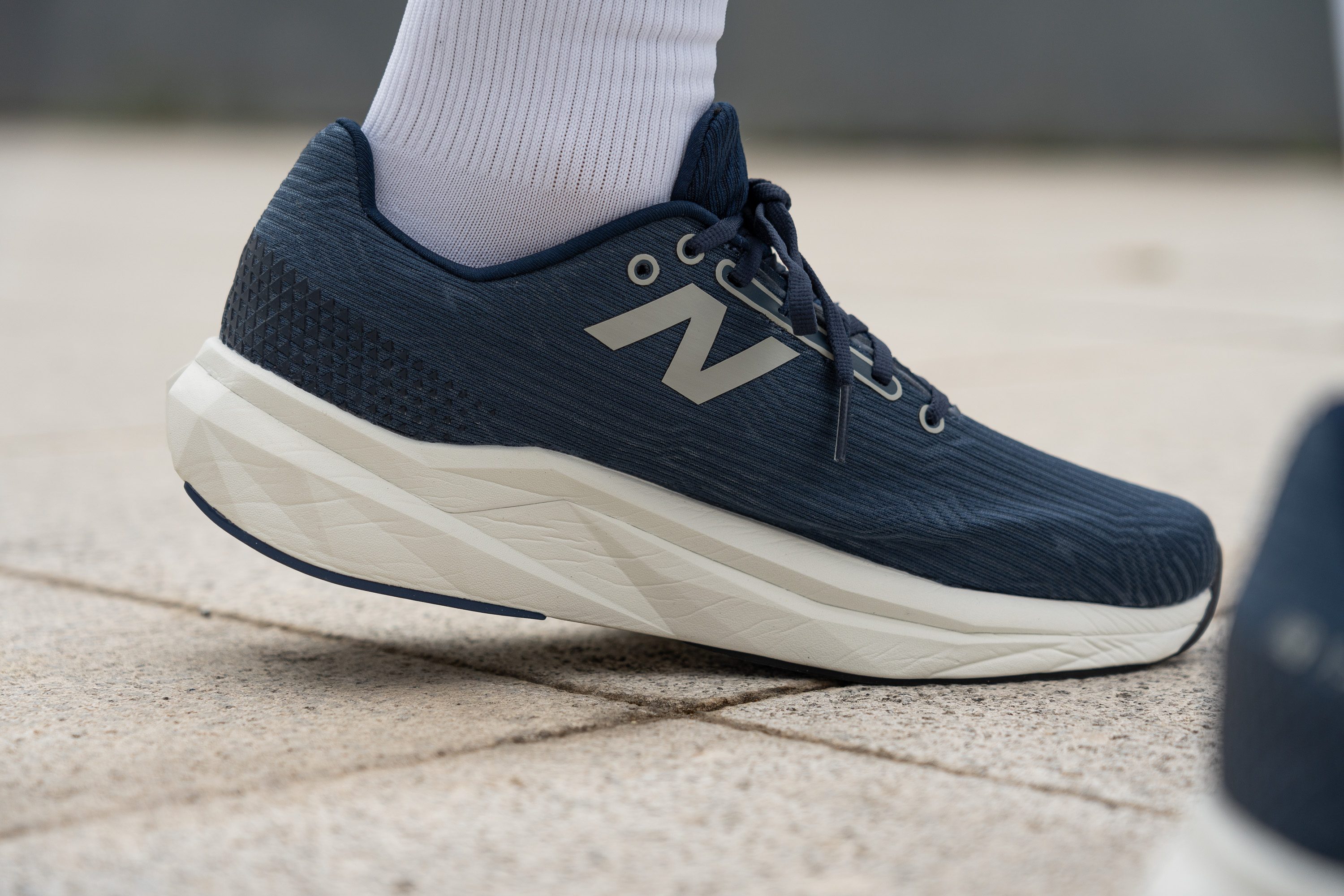
| FuelCell Propel v5 | 6.7 mm |
| Media | 8.6 mm |
Suavidad de la mediasuela
En estos últimos años, nos ha quedado claro que New Balance pretende hacerse un hueco en el mercado ofreciendo mediasuelas mullidas en sus zapatillas para correr por asfalto, ¡incluyendo sus opciones más económicas!

Las FuelCell Propel v5 son un ejemplo perfecto de esta estrategia, y destacan mucho en este aspecto, presumiendo de la mejor relación precio/espuma que hemos visto, ya que nuestro durómetro marcó solo 9,8 HA.
¿Que si es bueno que sean tan blandas? Pues no sabíamos decirte. A ver, aunque mucha gente cree que en cuanto más blandas sean unas zapatillas, mejor, esto también puede tener sus inconvenientes. Por ejemplo, una espuma demasiado mullida puede hacer que tus caderas y tus rodillas terminen trabajando más de la cuenta, haciendo que las piernas tengan que hacer un esfuerzo extra si la espuma no tiene un buen rebote.
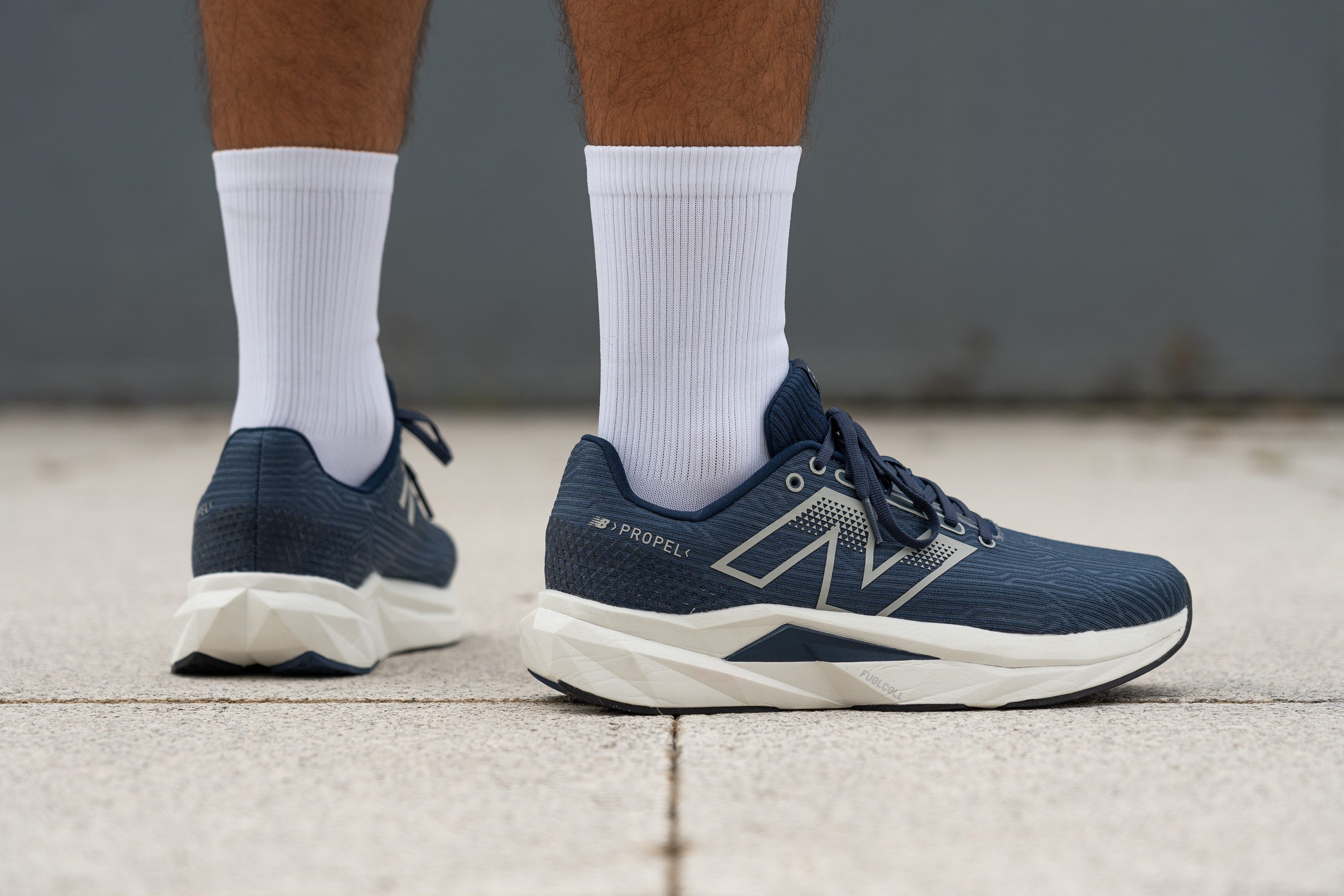
Esta formulación específica de la espuma FuelCell, que está diseñada para reducir costes y mejorar la asequibilidad, no ofrece un retorno de energía extraordinario. Sin embargo, siguiendo nuestro análisis, creemos que supera a la mayoría de sus competidoras a base de EVA dentro de su rango de precios.
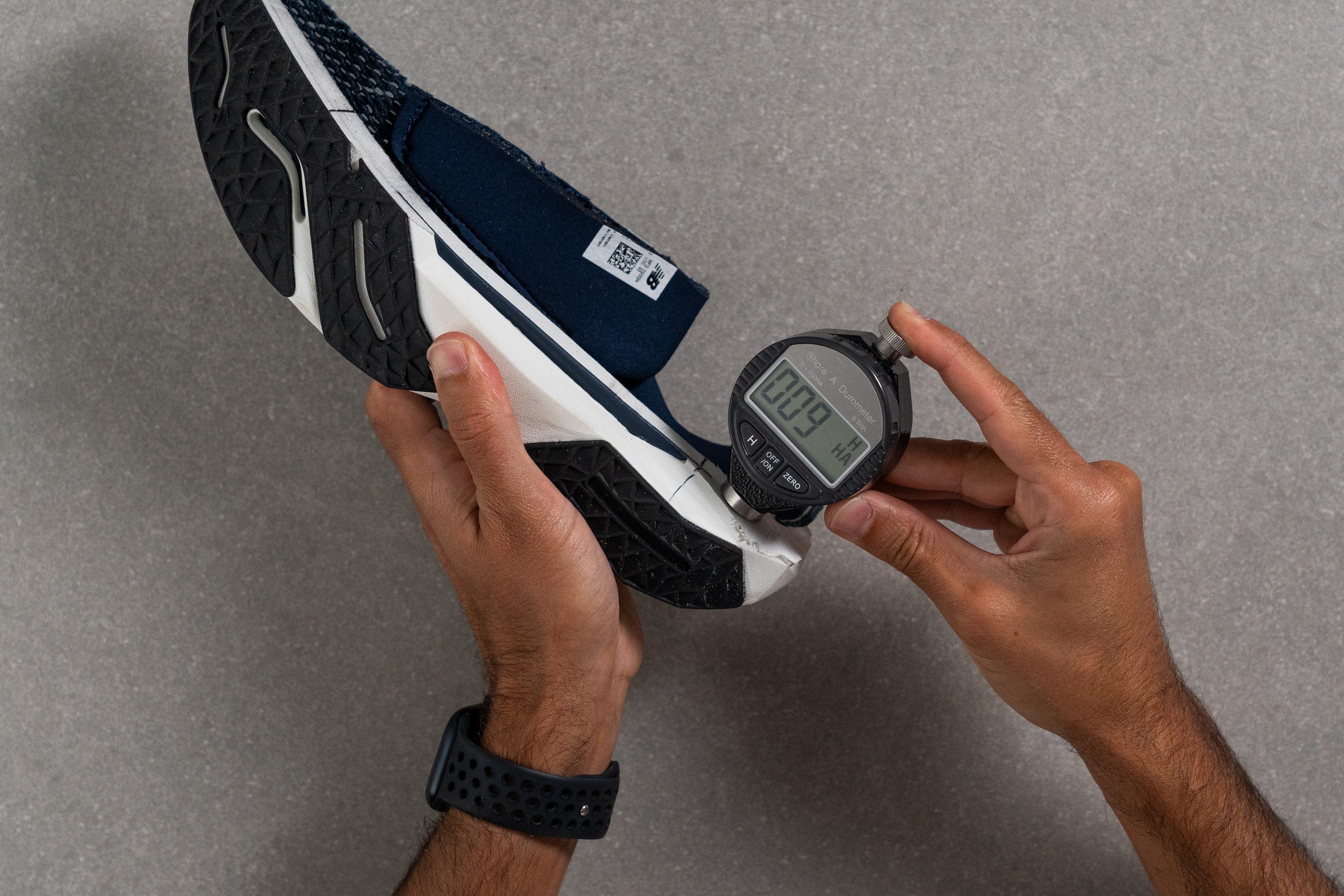
| FuelCell Propel v5 | 9.8 HA |
| Media | 20.4 HA |
Rocker
El rocker de las Propel v5 está integrado de forma sutil y es bastante temprano, proporcionando la elevación justa para complementar la moderada altura de su suela.
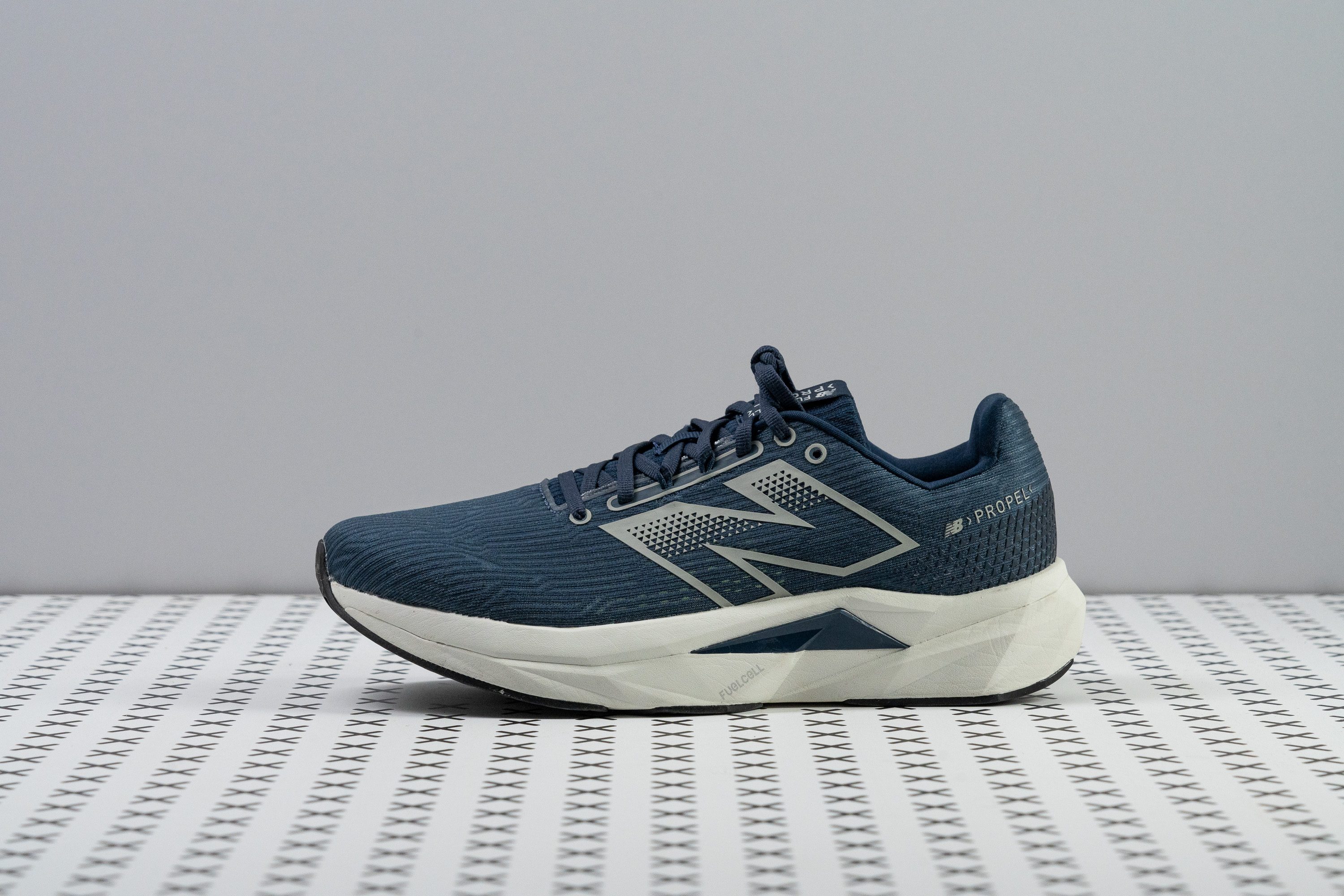
Esta curvatura, que es parecida a la de las Pegasus, les va como anillo al dedo a estas zapatillas, ya que ofrece una pisada equilibrada que mejora la experiencia general al correr. La verdad es que nos parece un enfoque eficaz para este tipo de zapatillas versátiles de entrenamiento diario.
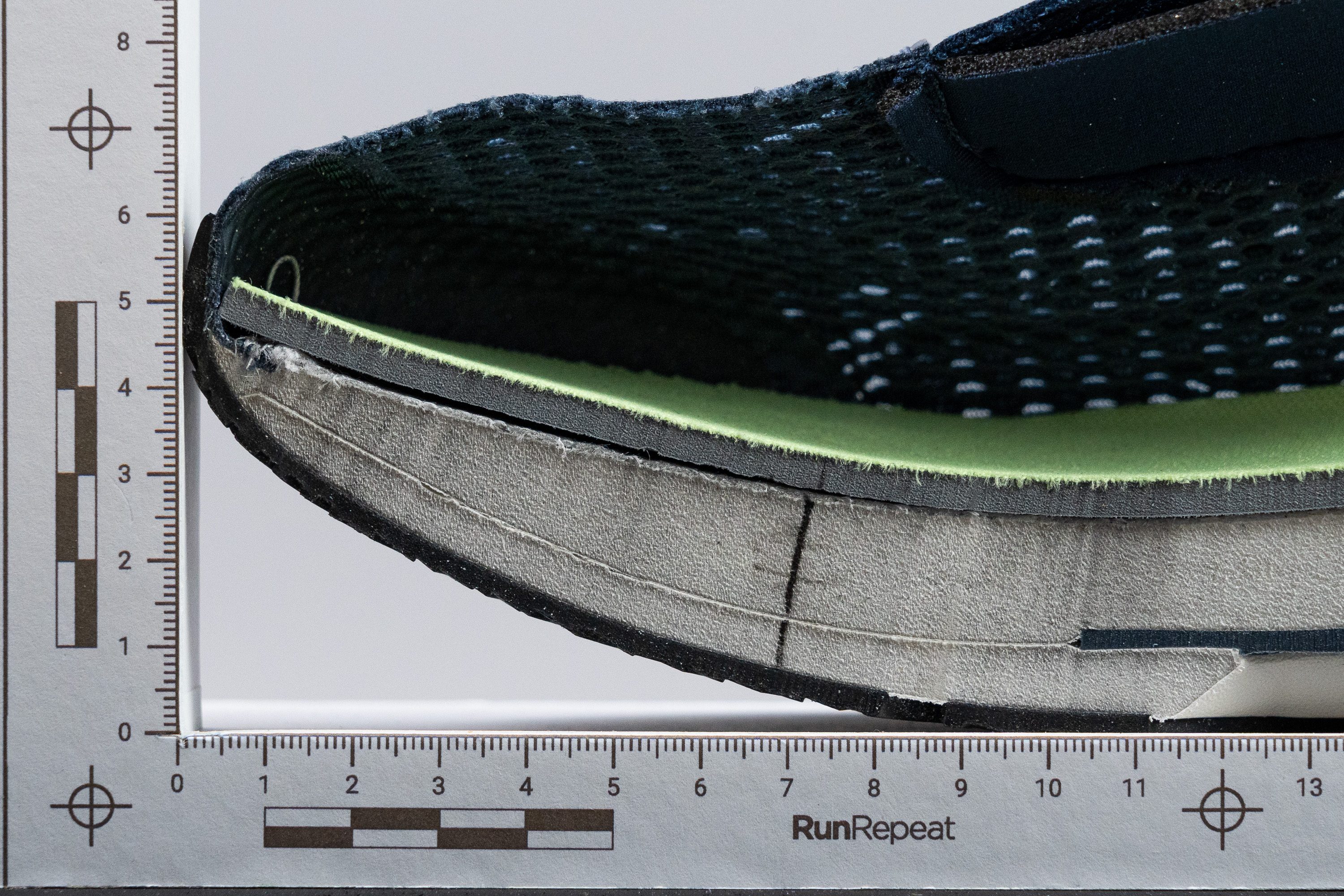
Placa
New Balance ha continuado el diseño de la placa de la v4 en las Propel v5, con una longitud parcial que se detiene en la zona de los metatarsos. Este diseño se adapta bien a los talonadores, facilitando las transiciones, pero creemos que la eficacia de esta placa no es nada del otro mundo.
Está hecha con TPU y es muy flexible, así que el impacto en la pisada es mínimo. Aunque sí que ofrece un poco de estabilidad y ayuda en las transiciones, también se nota en los pies y reduce un poco la comodidad en las carreras lentas y fáciles.
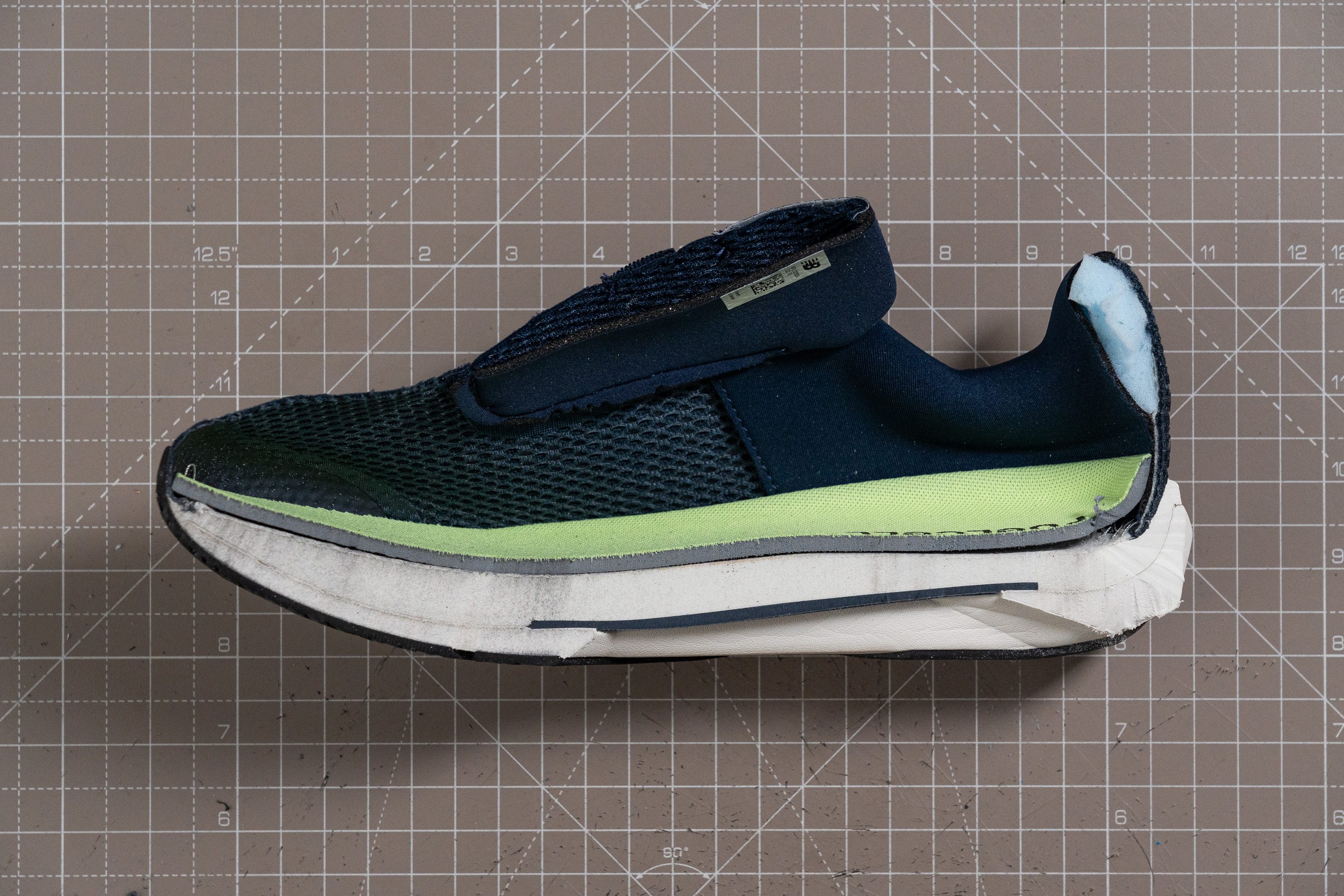
Tallaje y ajuste
Talla
Las New Balance FuelCell Propel v5 quedan un poco pequeñas (77 votos).
Anchura / Ajuste
El ajuste de las Propel v5 no nos sorprendió, pero tampoco es que nos pareciesen muy espaciosas. La única forma de saber sus dimensiones reales era haciéndole un molde de gel, ¡así que allá fuimos!
En cuanto el molde estuvo listo, medimos su punto más ancho con un calibre digital. Marcó 93,1 mm, así que es un poco más estrecho que la media, pero no lo suficiente como para colarse en el grupo de zapatillas estrechas. Creemos que las personas con pies de tamaño medio a estrechos son las que más disfrutarán del ajuste de estas NB, pero si necesitas más espacio para los dedos, no te olvides de la versión ancha.
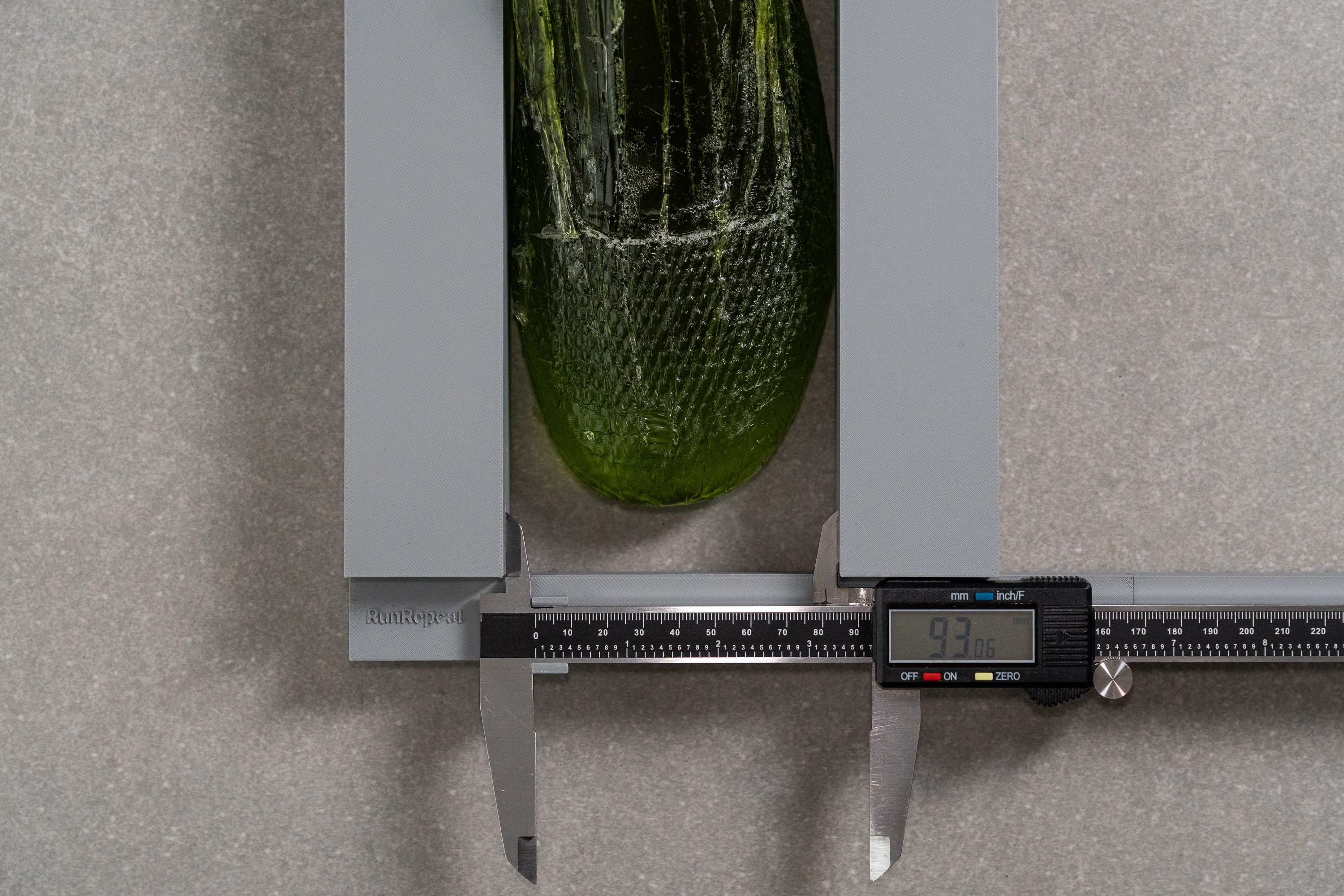
| FuelCell Propel v5 | 93.1 mm |
| Media | 95.1 mm |
Anchura de la parte delantera
La parte delantera de este modelo tiene una forma bastante redondeada que no se estrecha hacia la punta, y cuando nuestro calibre marcó 73,9 mm (un resultado dentro de la media), nos quedó totalmente claro.
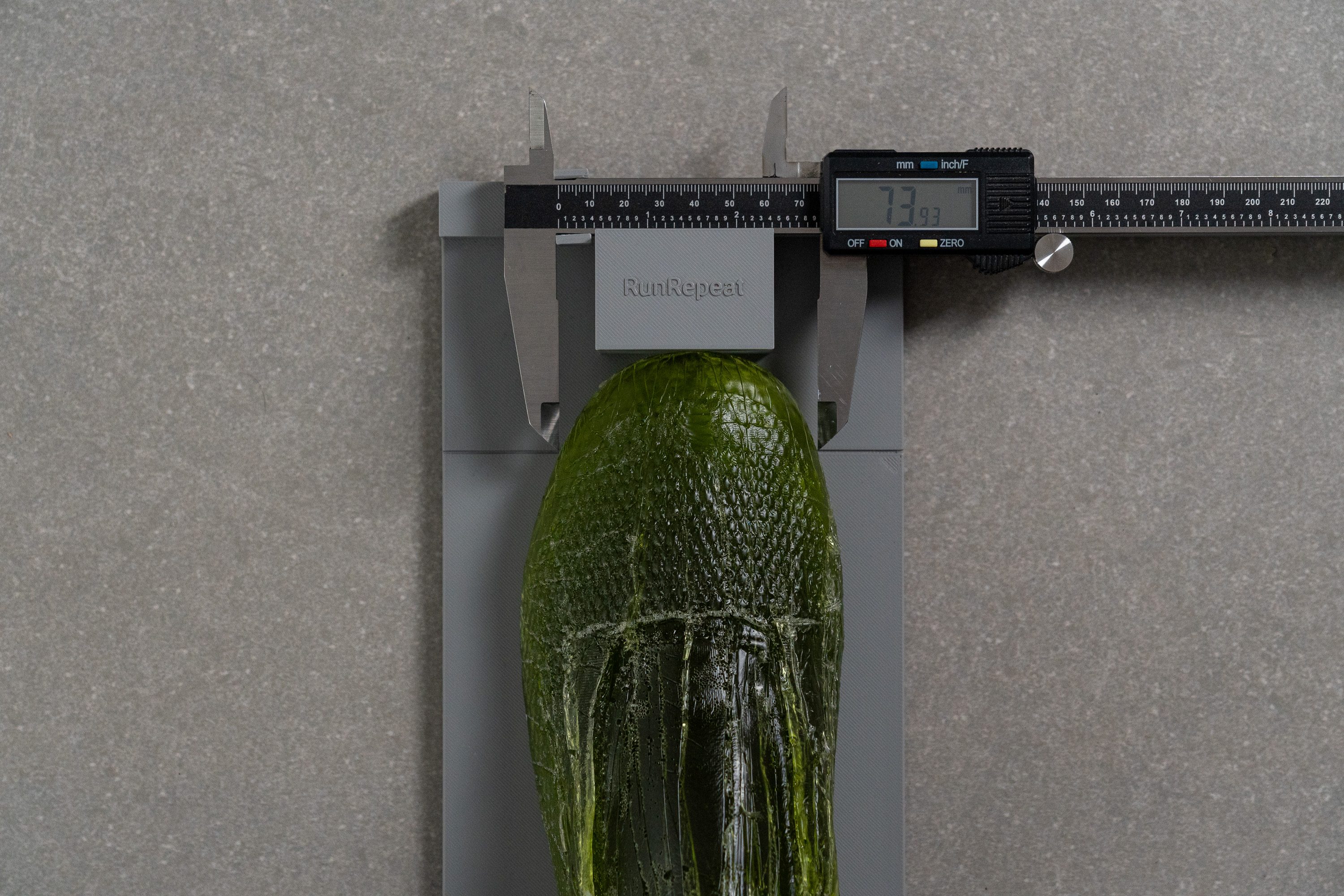
| FuelCell Propel v5 | 73.9 mm |
| Media | 73.2 mm |
Altura de la parte delantera
El espacio vertical de este modelo también es adecuado, y pudimos estirar los dedos sin problema.
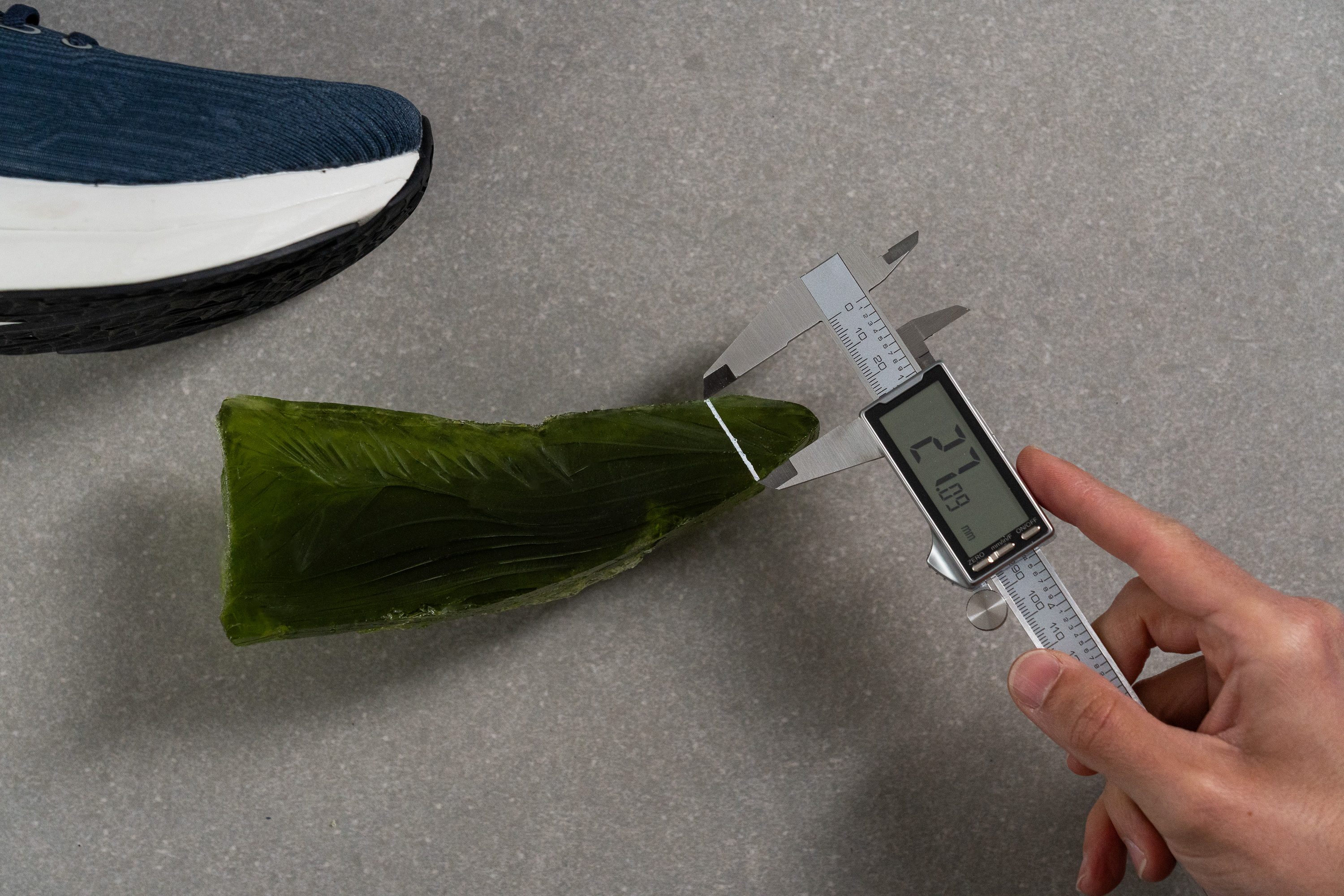
Nuestro calibre marcó una altura estándar de 27,1 mm cuando medimos la altura de la parte delantera de estas New Balance.
| FuelCell Propel v5 | 27.1 mm |
| Media | 27.1 mm |
Tracción / Agarre
Traction test
Las Propel v5 se llevaron un 0,42 en nuestra prueba de tracción; una cifra respetable para un modelo que no es premium. El agarre en suelo seco no nos dio ningún problema, lo que las hace aptas para un uso diario en asfalto normal. Incluso si el suelo resbala un poco, la suela exterior de este modelo no debería darte problemas.
| FuelCell Propel v5 | 0.42 |
| Media | 0.48 |
Diseño de la suela exterior
Nos dimos cuenta de que New Balance vuelve a utilizar el mismo diseño con la serie Propel, ya que puede simplemente crear una versión más económica de sus modelos de gama alta.
Al igual que las Propel v4 imitaban a las SC Trainer v2, las Propel v5 tienen la mediasuela y la suela exterior de las SC Trainer v3, con el típico corte central que muestra la placa de TPU.

Flexibilidad / Rigidez
Flexibility / Stiffness
During our flex test—requiring a bend to 90 degrees—we noted that only 18.8N was needed, a decrease from the previous model's 24.4N.
This improvement highlights enhanced flexibility, making the shoe exceptionally suitable for everyday activities, whether it's a casual walk by the lake or a quick trip downtown to get some tasty ice cream!
En esta prueba se utiliza una metodología antigua, así que no verás las zapatillas que hemos analizado últimamente en la tabla. Los resultados obtenidos con metodologías distintas no se pueden comparar.
| FuelCell Propel v5 | 18.8N |
| Media | 28.1N |
Rigidez en frío (%)
Volvimos a meterlas 20 minutos en el congelador para evaluar su rigidez cuando hace un frío que pela. Después de sacarlas, necesitamos un 21,3 % más de fuerza para doblarlas 90 grados, así que estamos contentos con el resultado.
| FuelCell Propel v5 | 21% |
| Media | 33% |
Peso
Las Propel v5 no solo pesan menos de 280 g, sino que además son más ligeras que sus predecesoras.
Segùn nuestra báscula, pesan 269 g, que no está nada mal teniendo en cuenta la altura de su suela y el nivel de amortiguación.

| FuelCell Propel v5 | 9.5 oz (269g) |
| Media | 9.3 oz (264g) |
Transpirabilidad
Las diferencias entre unas zapatillas asequibles y unas de gama alta suelen verse en la mediasuela o en la parte superior. En este caso, New Balance ha utilizado la mediasuela FuelCell, lo que indica que probablemente haya escatimado gastos en la parte superior, para así hacer que este modelo siga siendo asequible.
Incluso intentando ahorrarse unos euros, nuestra prueba de humo reveló que la transpirabilidad no se vio comprometida. Es más, este modelo dejó que el aire entrase y saliese tan bien que se llevó una puntuación perfecta: un 5/5. Nos quedamos boquiabiertos mirando cómo estas zapatillas expulsaban el humo, demostrando que su flujo de aire es excepcional.
Para comprender la excelente ventilación de estas zapatillas tuvimos que hacerles varias pruebas, lo que nos llevó a ponerlas frente a nuestra luz. Esto nos enseñó que la parte superior de las Propel es muy transpirable, ya que tiene agujeritos para la ventilación por todo el mediopié y el antepié.
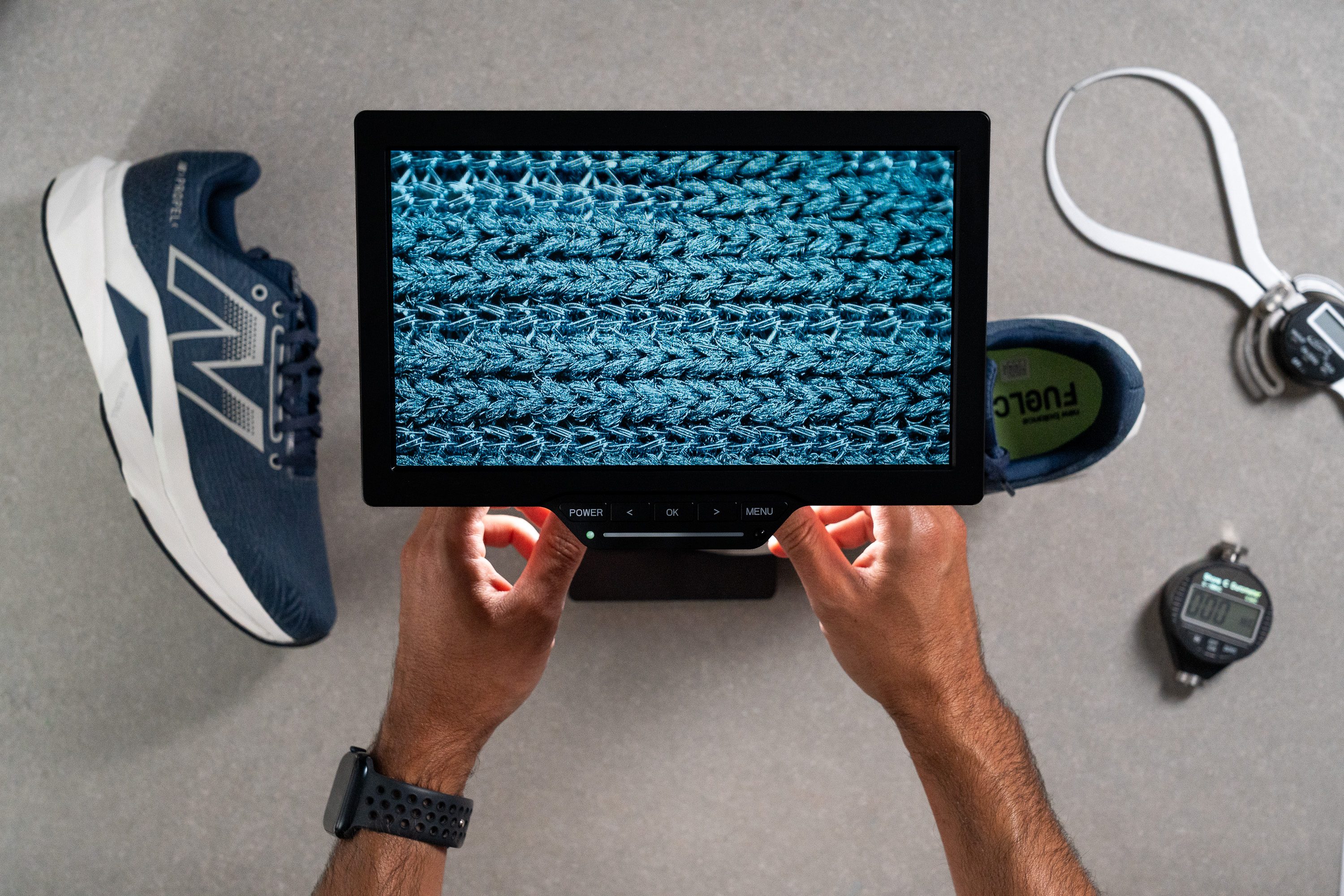
Bajo el microscopio, la malla de ingeniería parecía estándar, pero nada del otro mundo en términos de innovación técnica. De hecho, puede que hasta flaquee en durabilidad.
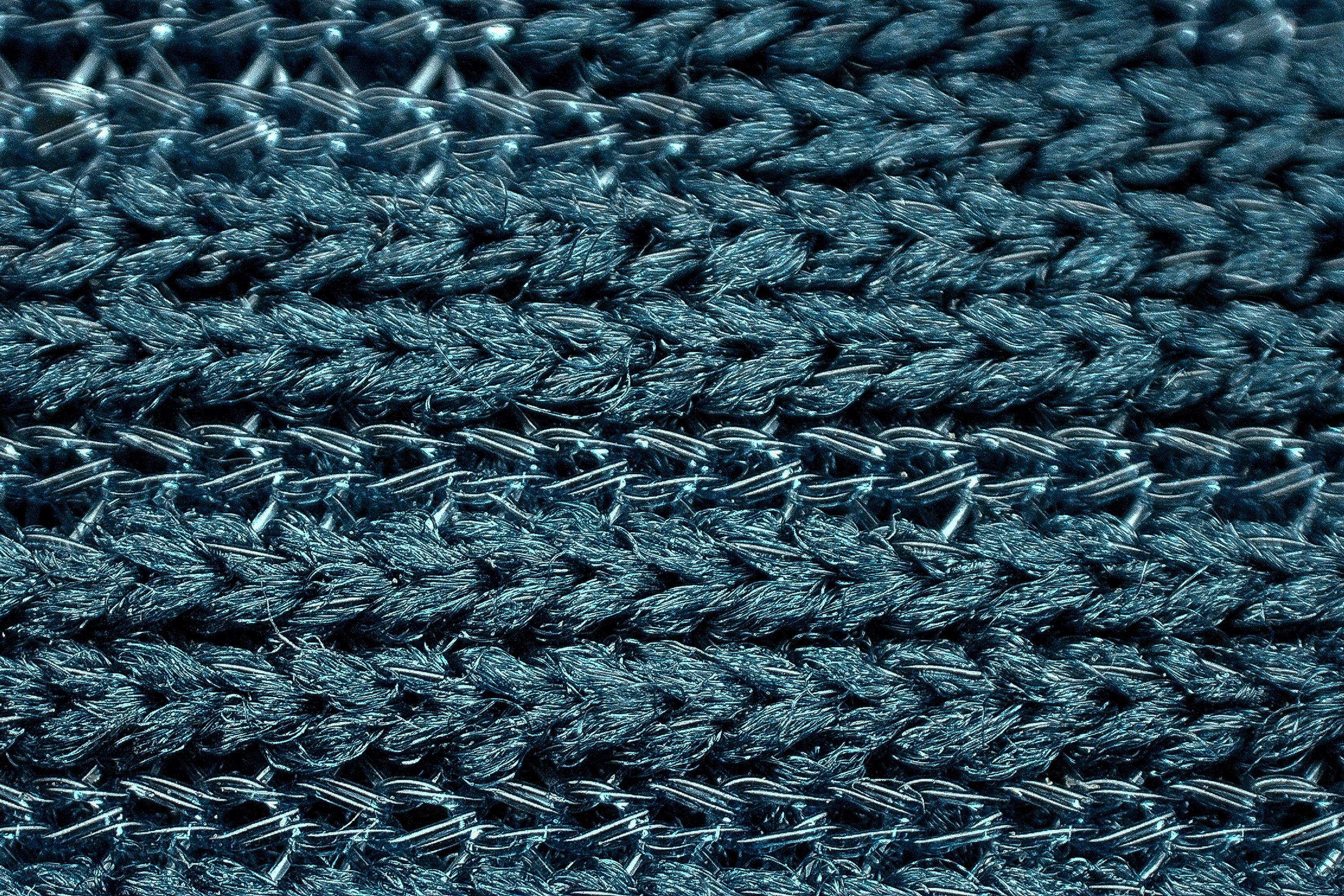
Pero bueno, cuando la analizamos con nuestras propias manos, nos dimos cuenta de que su diseño y estructura son bastante buenos para el precio de este modelo.
| FuelCell Propel v5 | 5 |
| Media | 3.7 |
Estabilidad
Prueba de estabilidad lateral
Incluso con su placa de TPU de longitud parcial, creemos que las Propel v5 solo son adecuadas para corredores neutros. Basamos este juicio en su espuma FuelCell, que es muy blanda, así como en la anchura de su mediasuela. A los corredores que necesitan más sujeción les recomendamos echarle un ojo a otras opciones, como las Brooks Launch GTS 10.
Rigidez torsional
Al tener una placa de TPU, nos parecía muy poco probable que estas zapatillas se llevasen un 1 o un 2 en esta prueba. La verdad, nos hemos quedado bastante satisfechos con su 3/5, ya que nos preocupaba que pudieran ser demasiado rígidas, igual que la versión anterior, ya que no es algo ideal para unas zapatillas versátiles de entrenamiento diario. Vamos, que nos ha encantado este sutil reajuste de New Balance.
| FuelCell Propel v5 | 3 |
| Media | 3.5 |
Rigidez del contrafuerte del talón
El contrafuerte del talón se llevó un sólido 3/5 en rigidez, pero no es algo que nos pillase desprevenidos. Es una puntuación típica para las zapatillas de entrenamiento diario, ya que ofrece un buen equilibrio entre comodidad y sujeción.
| FuelCell Propel v5 | 3 |
| Media | 2.9 |
Anchura de la mediasuela - antepié
La anchura de la mediasuela en el antepié es de solo 111,8 mm, así que es un poco más estrecha que lo que solemos ver en nuestro laboratorio. Esta medida, sumada a lo blanda que es la espuma, nos parece un motivo clave por el que no recomendarles este modelo a las personas que necesitan estabilidad en la pisada.

| FuelCell Propel v5 | 111.8 mm |
| Media | 114.4 mm |
Anchura de la mediasuela - talón
Las Propel v5 tienen una anchura de 89,1 mm en el talón, así que también rondan la media. Esta medida confirma que son una buena opción solo para los corredores neutros.
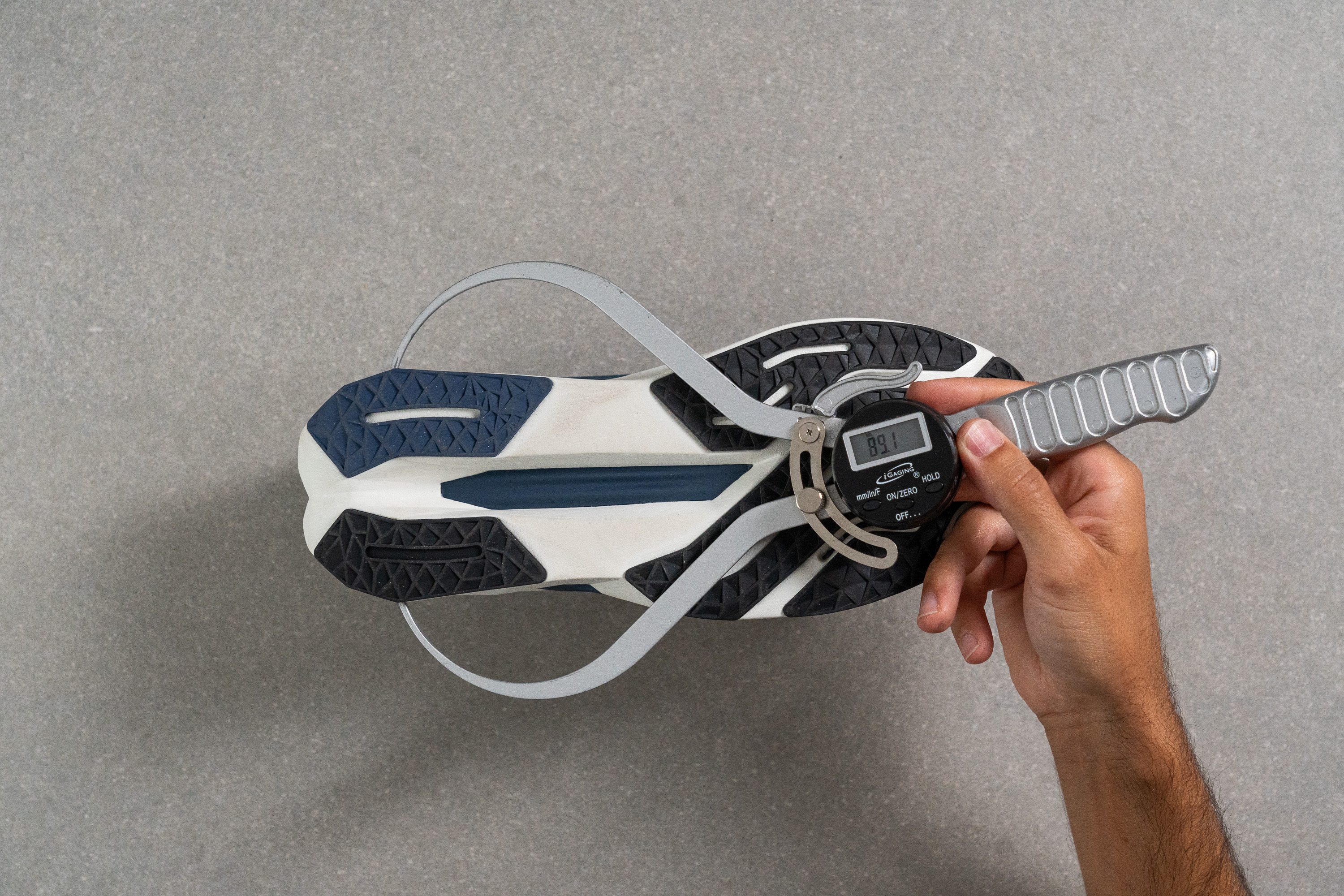
| FuelCell Propel v5 | 89.1 mm |
| Media | 90.7 mm |
Durabilidad
Durabilidad de la parte delantera
Después de analizar cientos y cientos de zapatillas en nuestro laboratorio y darle caña a sus uppers con nuestro Dremel, hemos desarrollado un sexto sentido que nos ayuda a predecir los resultados. Por desgracia, creemos que las Propel v5 no van a salir muy bien paradas en esta prueba.
Como nos temíamos, terminaron hechas un desastre: su maravillosa transpirabilidad y la ausencia de elementos de protección hicieron que se llevasen un pésimo 1/5 en durabilidad de la parte delantera.
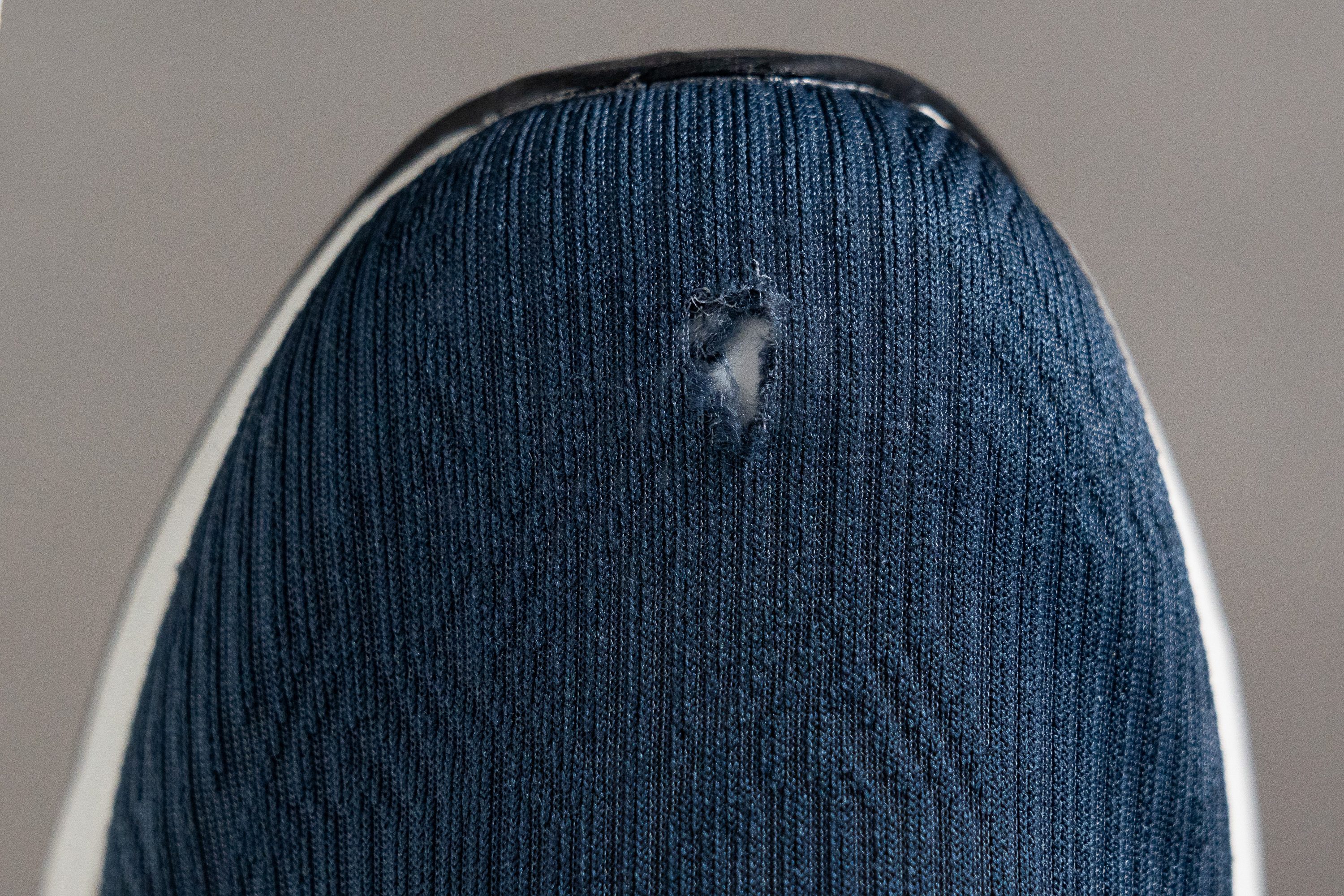
| FuelCell Propel v5 | 1 |
| Media | 2.6 |
Durabilidad del acolchado del talón
Aunque esta primera decepción nos la esperábamos, y tampoco es algo raro entre las zapatillas para correr por asfalto, este segundo desastre con el que nos encontramos sí que nos preocupó un poco más.
El 1/5 que se llevaron las Propel v5 en durabilidad del acolchado del talón nos pilló desprevenidos. Por lo tanto, si sueles desgastar las zapatillas en esta zona, lo mejor es que pases de estas.
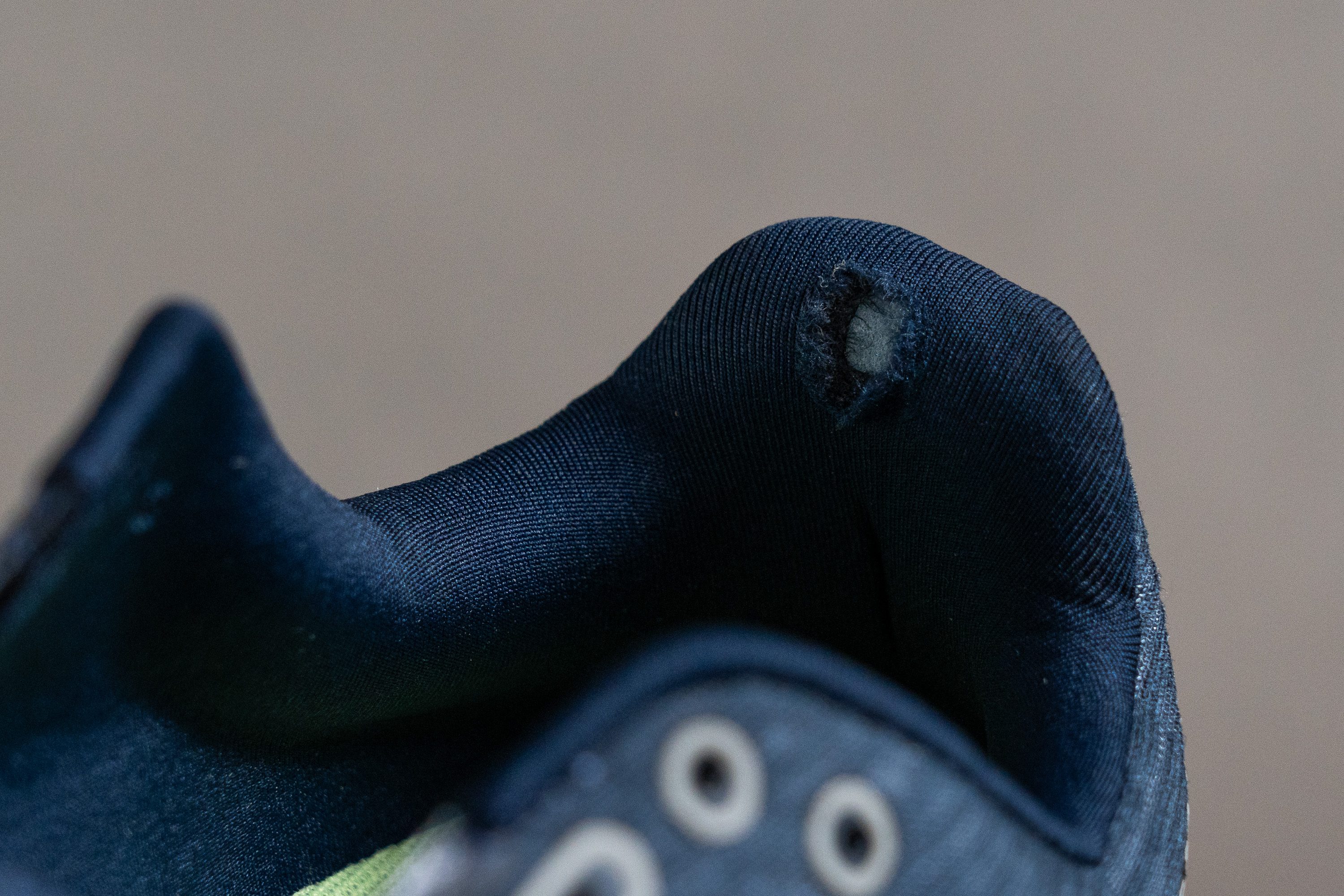
| FuelCell Propel v5 | 1 |
| Media | 3.4 |
Dureza de la suela
Teníamos la esperanza de que la suela exterior de este modelo nos dejase hacer borrón y cuenta nueva. Vimos que New Balance continúa utilizando el mismo enfoque en cuanto a diseño dentro de la serie Propel, ya que simplemente crea una versión más económica de sus modelos de gama alta.

Al igual que las Propel v4 imitaban a las SC Trainer v2, las Propel v5 tienen la mediasuela y la suela exterior de las SC Trainer v3, con el típico corte central que muestra la placa de TPU.
En cuanto al caucho, es un compuesto estándar que obtuvo un resultado de 78,3 HC en nuestro durómetro. Proporciona un agarre adecuado, pero no es excepcional.

| FuelCell Propel v5 | 78.3 HC |
| Media | 79.2 HC |
Durabilidad de la suela
Que a la suela exterior de estas zapatillas le fuese peor que al upper estaba complicado, la verdad.
Así que los resultados fueron bastante mejores, pero bueno, que no se acercan al nivel de otras competidoras líderes en el mercado como las ASICS Jolt 4. Cuando medimos los daños, nos dio 1,1 mm, y aunque esto indica que hay cierto margen de mejora, también hace que no nos preocupemos demasiado.
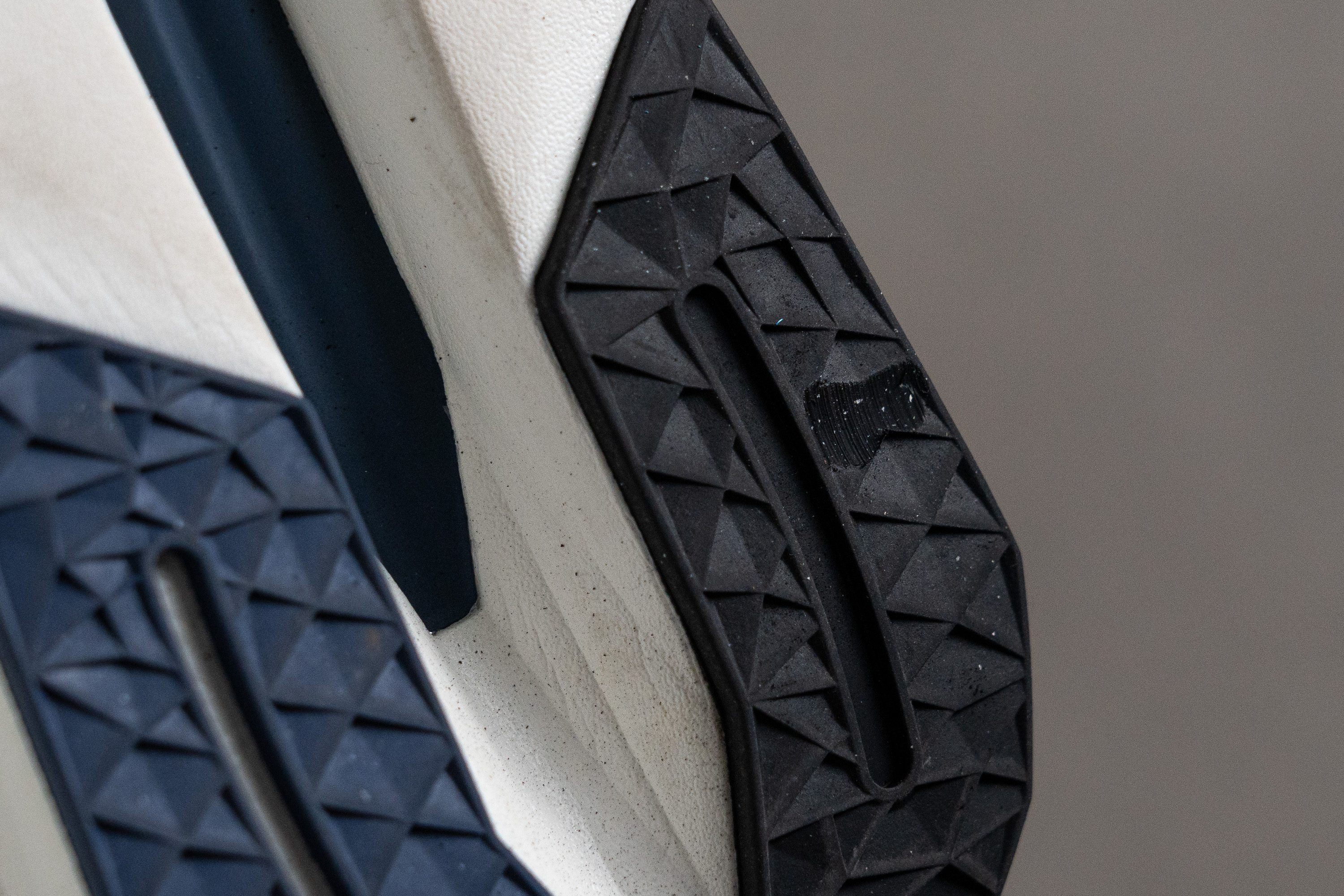
| FuelCell Propel v5 | 1.1 mm |
| Media | 1.1 mm |
Grosor de la suela
Al medir el grosor de la suela exterior de las Propel, nuestro calibre marcó 3,2 mm. Creemos que ofrece una buena protección para la mediasuela y, basándonos en nuestras pruebas de durabilidad, estamos seguros de que estas zapatillas son adecuadas para un uso constante.
Eso sí, te recomendamos que evites los caminos de grava con ellas. El corte central que tienen en la suela exterior no se adapta bien a este tipo de superficies, así que nos parecen una mejor opción para las carreteras de siempre o para los senderos que están cuidados.

| FuelCell Propel v5 | 3.2 mm |
| Media | 3.2 mm |
Varios
Grosor de la plantilla
Con 4,1 mm de grosor, la plantilla de las Propel v5 tiene un diseño sencillo.
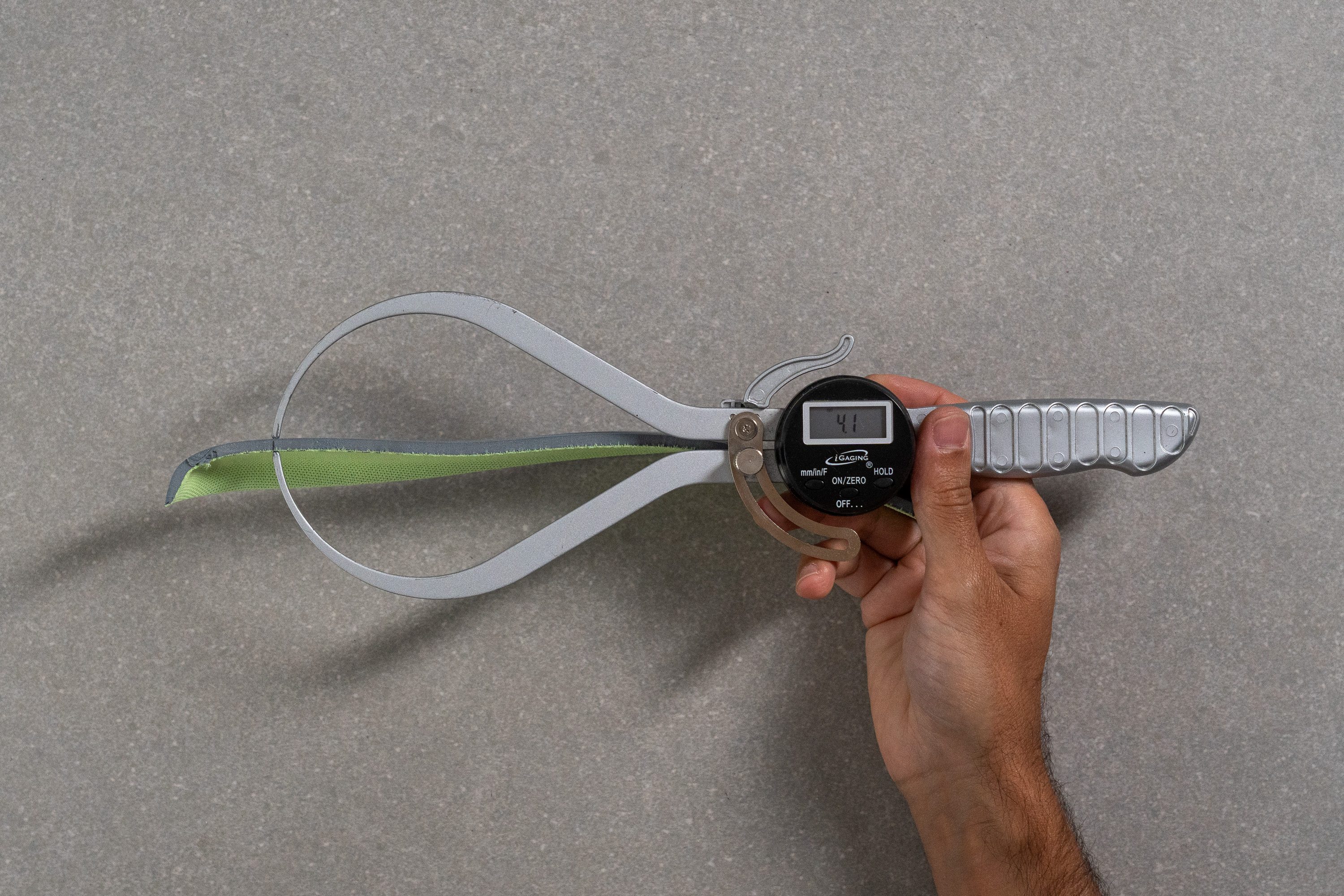
| FuelCell Propel v5 | 4.1 mm |
| Media | 4.5 mm |
Plantilla extraíble
No tuvimos problema cambiándoles la plantilla, ya que las dimensiones y la forma de estas zapatillas son bastante estándar.
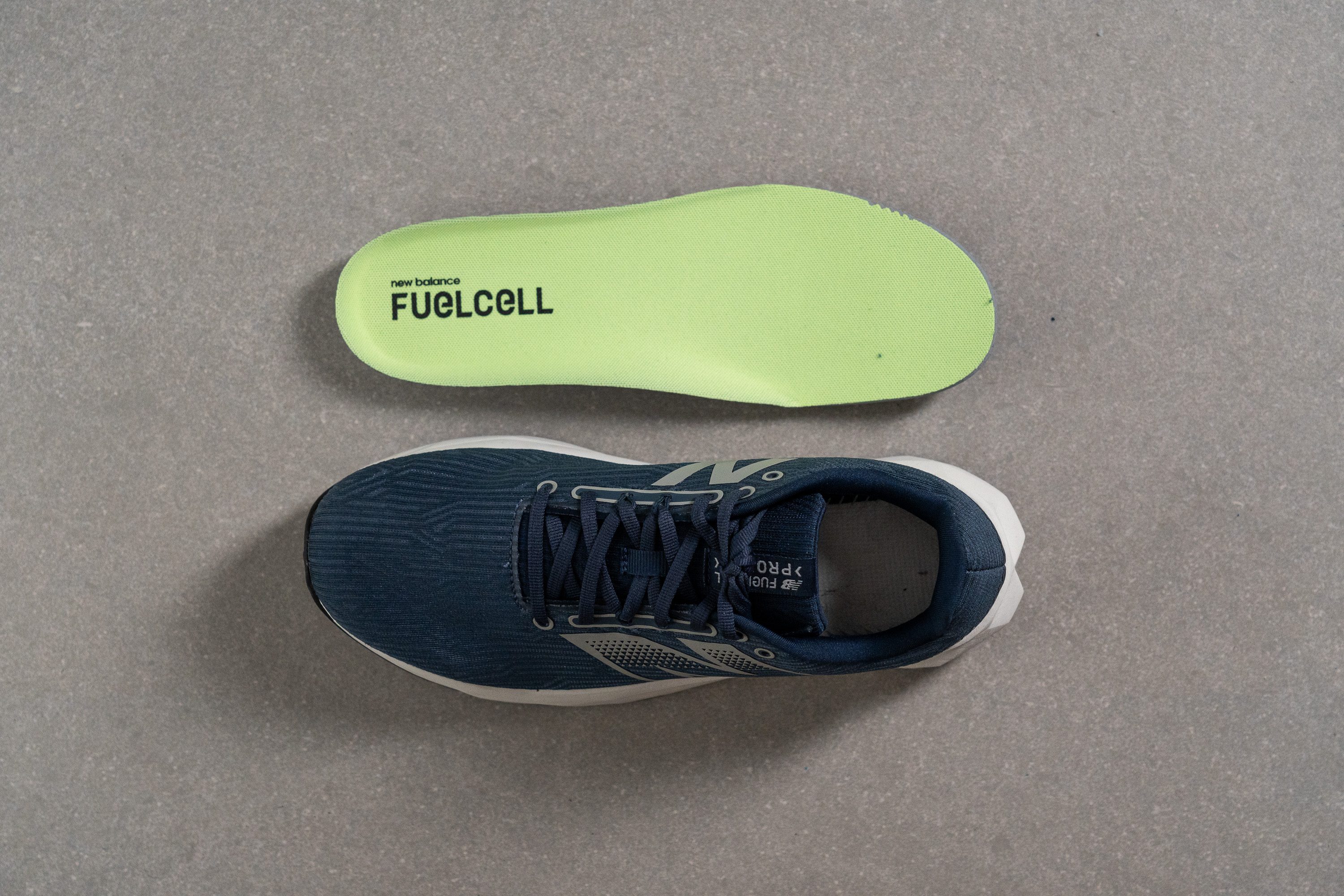
| FuelCell Propel v5 | Sí |
Suavidad de la mediasuela en frío
Descubrimos que la lengüeta no está sujeta a los laterales, que la verdad era de esperar, pero no deja de ser una oportunidad perdida. Eso sí, tiene un lacito en el medio que no deja que se mueva de su sitio, evitando que se vaya de un lado a otro en las carreras a ritmo rápido.
| FuelCell Propel v5 | 13.6 HA |
| Media | 25.1 HA |
Rigidez de la mediasuela en frío (%)
Como esta versión de la FuelCell es principalmente EVA, ya nos estábamos haciendo a la idea de que nuestra prueba de frío iba a ser complicada. Metimos las zapatillas 20 minutos en nuestro congelador y luego volvimos a analizar la espuma. Como nos esperábamos, el resultado aumentó en un 39,7 %; un cambio importante, aunque este modelo sigue siendo bastante mullido con sus 13,6 HA.

| FuelCell Propel v5 | 40% |
| Media | 24% |
Elementos reflectantes
Entendemos la decisión de New Balance de reservar los elementos reflectantes para sus modelos premium, y como este no forma parte de ese grupo, no tiene elementos que brillen.
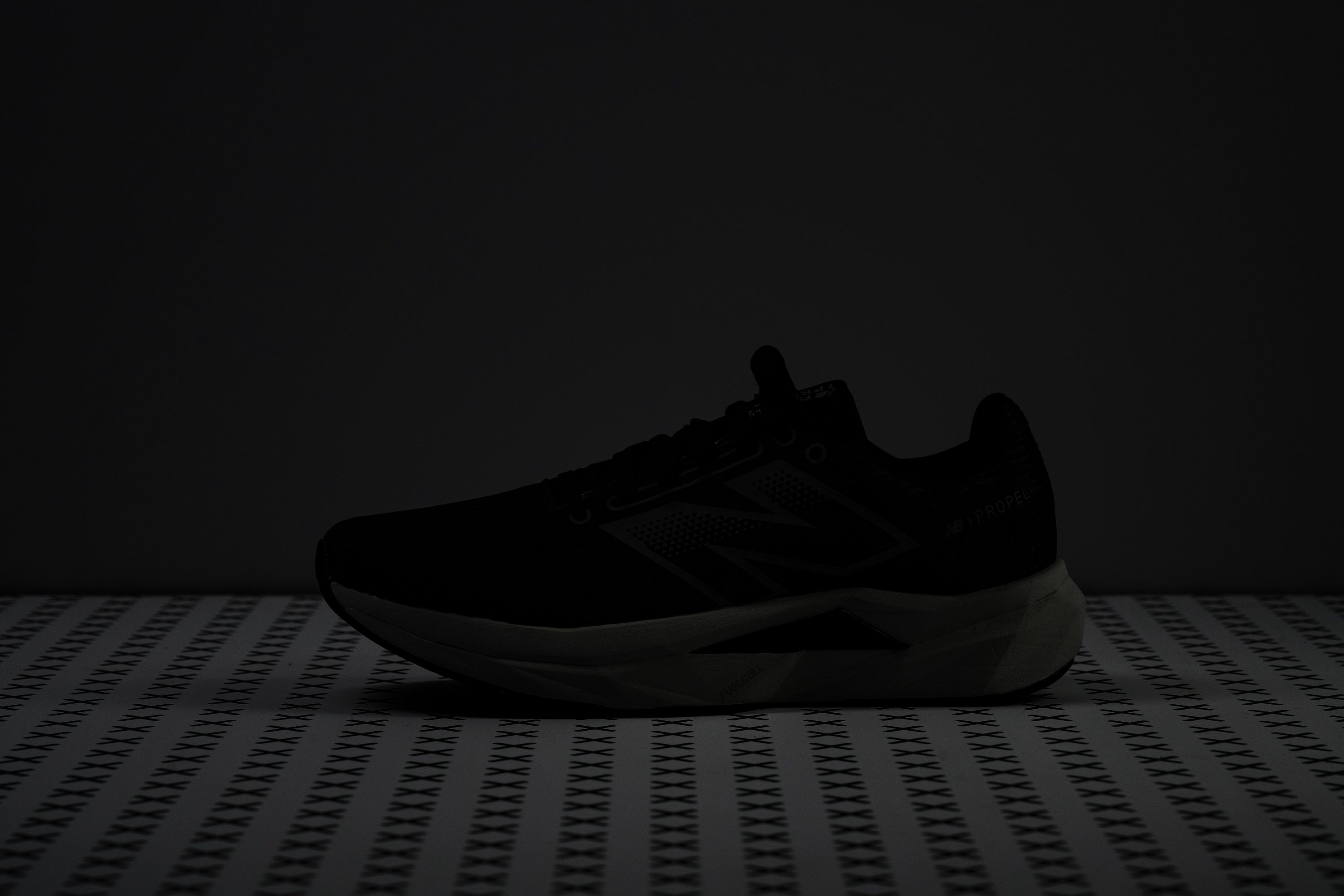
| FuelCell Propel v5 | No |
Acolchado de la lengüeta
En nuestro laboratorio, normalmente nos encontramos con zapatillas de running que tienen lengüetas finas como un folio o demasiado mullidas, así que ya se nos hace hasta raro que una marca consiga ofrecer un buen equilibrio entre peso y comodidad. Pues New Balance nos ha sorprendido, porque eso es justo lo que ha logrado con las Propel v5: tienen una lengüeta de 5,6 mm que es cómoda y ligera.
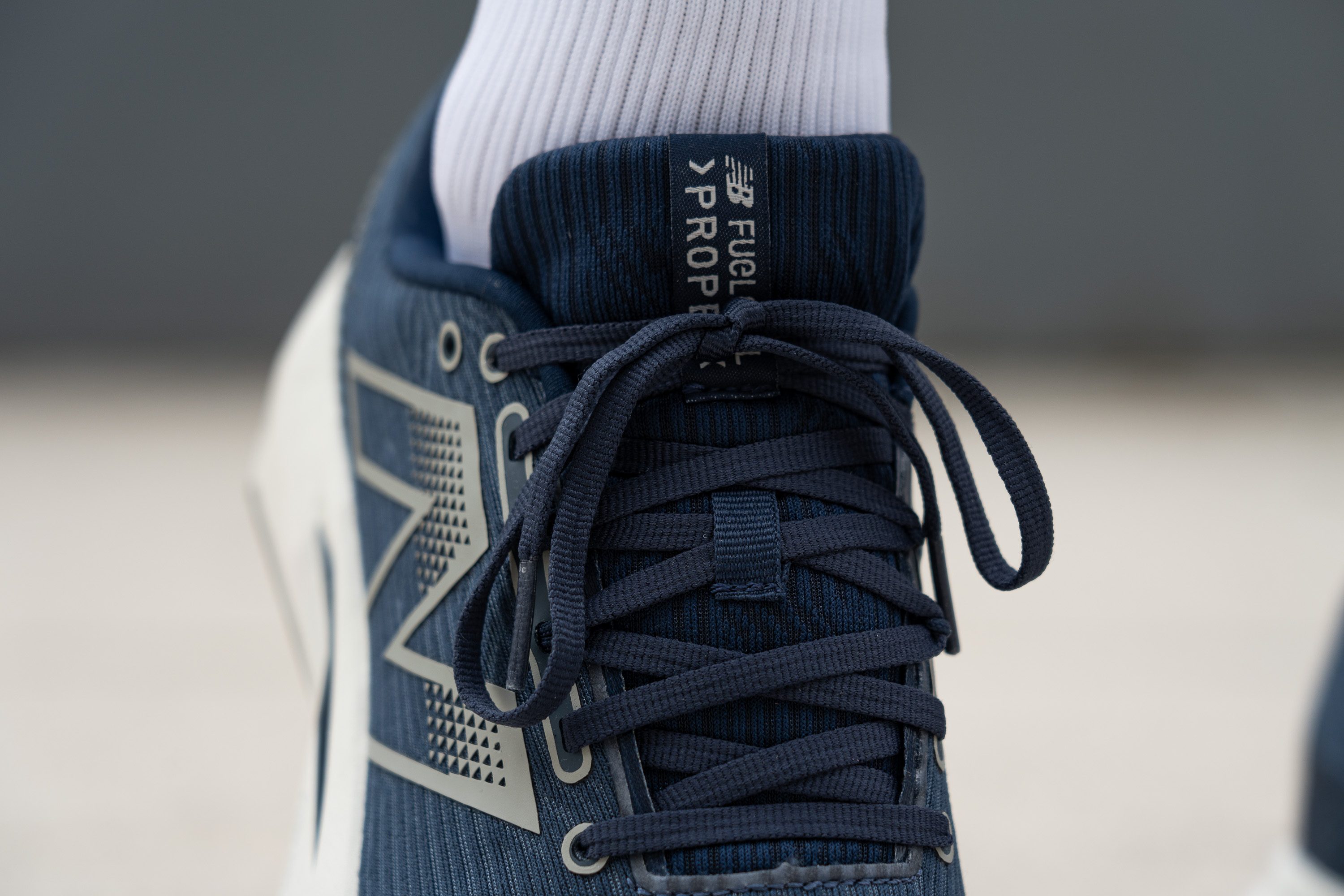
El sencillo sistema de cordones con ojales perforados también nos sorprendió, ya que es sencillo pero funcional, 2 ventajas que a veces las marcas pasan por alto. El cierre está muy bien y los cordones no nos dieron ningún problema. Vamos, que nos ha encantado.
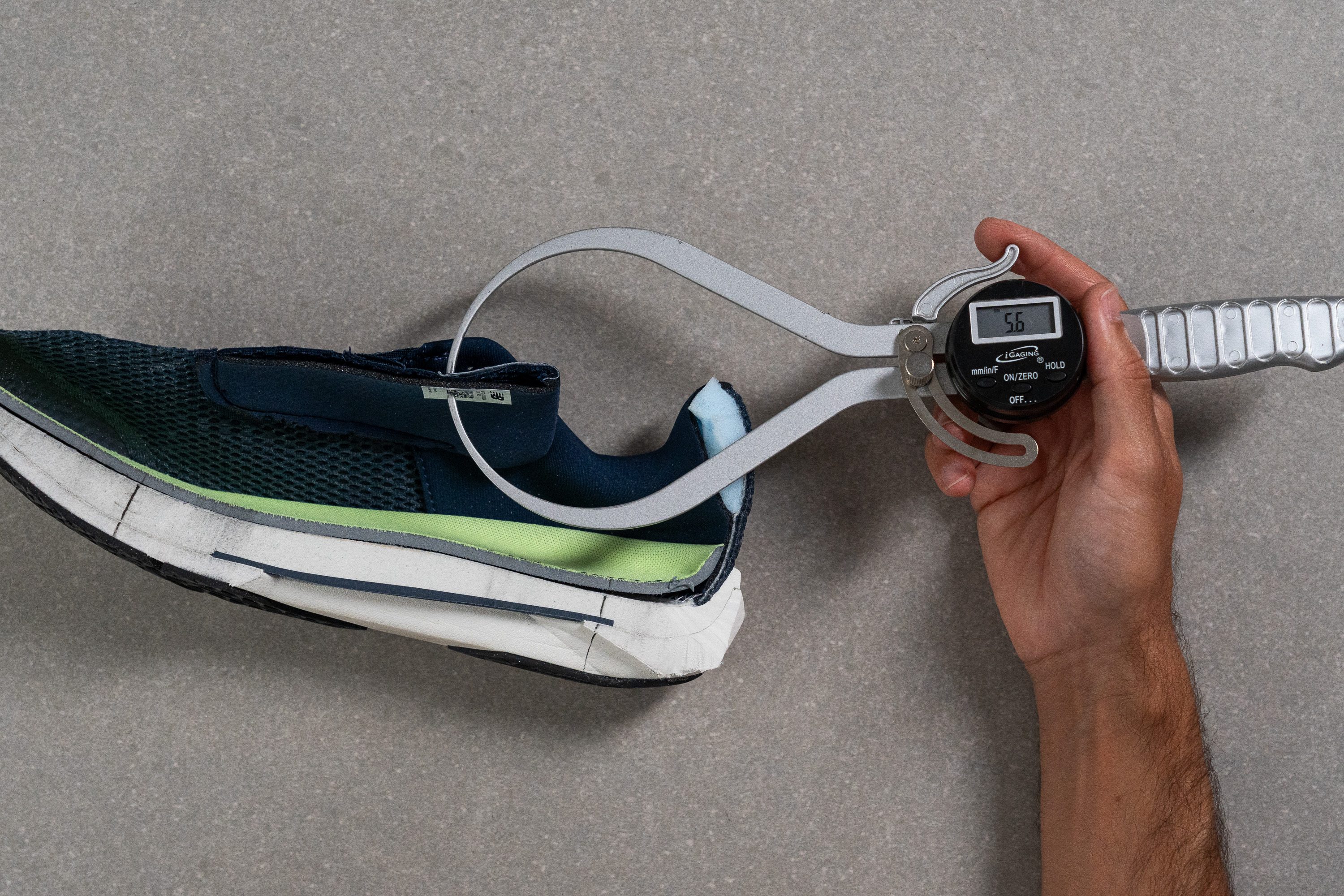
| FuelCell Propel v5 | 5.6 mm |
| Media | 5.8 mm |
Lengüeta: tipo de refuerzo
Descubrimos que la lengüeta no está sujeta a los laterales, que la verdad era de esperar, pero no deja de parecernos una oportunidad perdida. Eso sí, tiene un lacito en el medio que no deja que se mueva de su sitio, evitando que se vaya de un lado a otro cuando corremos a ritmo rápido.
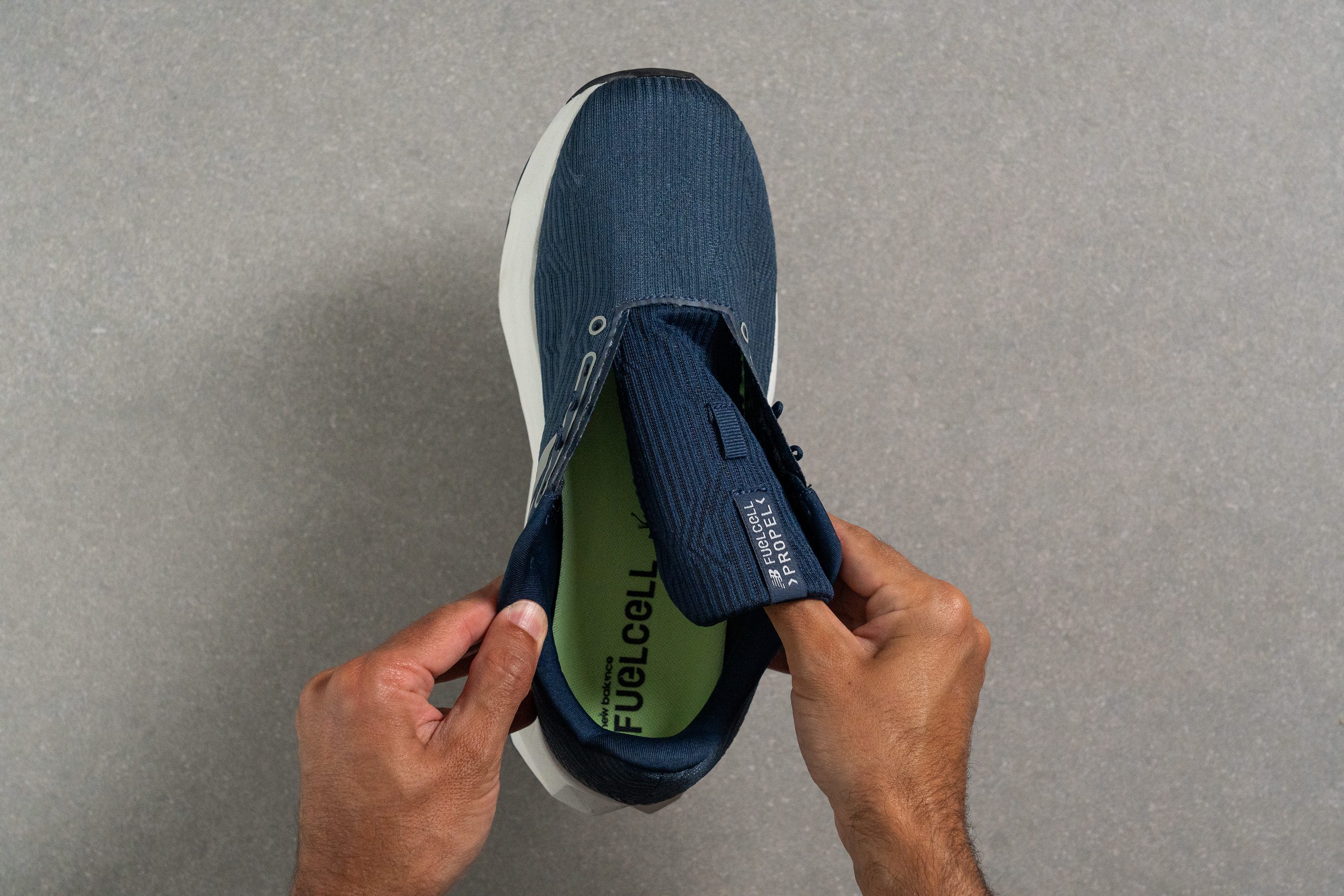
| FuelCell Propel v5 | Ninguno |
Precio
Las New Balance FuelCell Propel v5 son un poco más caras que su versión anterior, y esta sí que es una ruta que no nos esperábamos que tomasen. Pero bueno, siguen estando a un precio competitivo dentro de la gama media.
Creemos que tienen una realidad calidad-precio estupenda, sobre todo para las personas a las que les duren las zapatillas. Además, son una alternativa formidable a otros modelos de entrenamiento diario más caros, como las Nike Pegasus 41.
| FuelCell Propel v5 | $120 |
Tirador del talón
Ninguna de las zapatillas para correr por asfalto que New Balance ha sacado hasta ahora en 2024, las Propel v5 incluidas, tiene tirador en el talón. Y aunque nos gustaría poder agarrarnos a algo al calzarnos, que no lo tengan no nos parece en absoluto un problema.
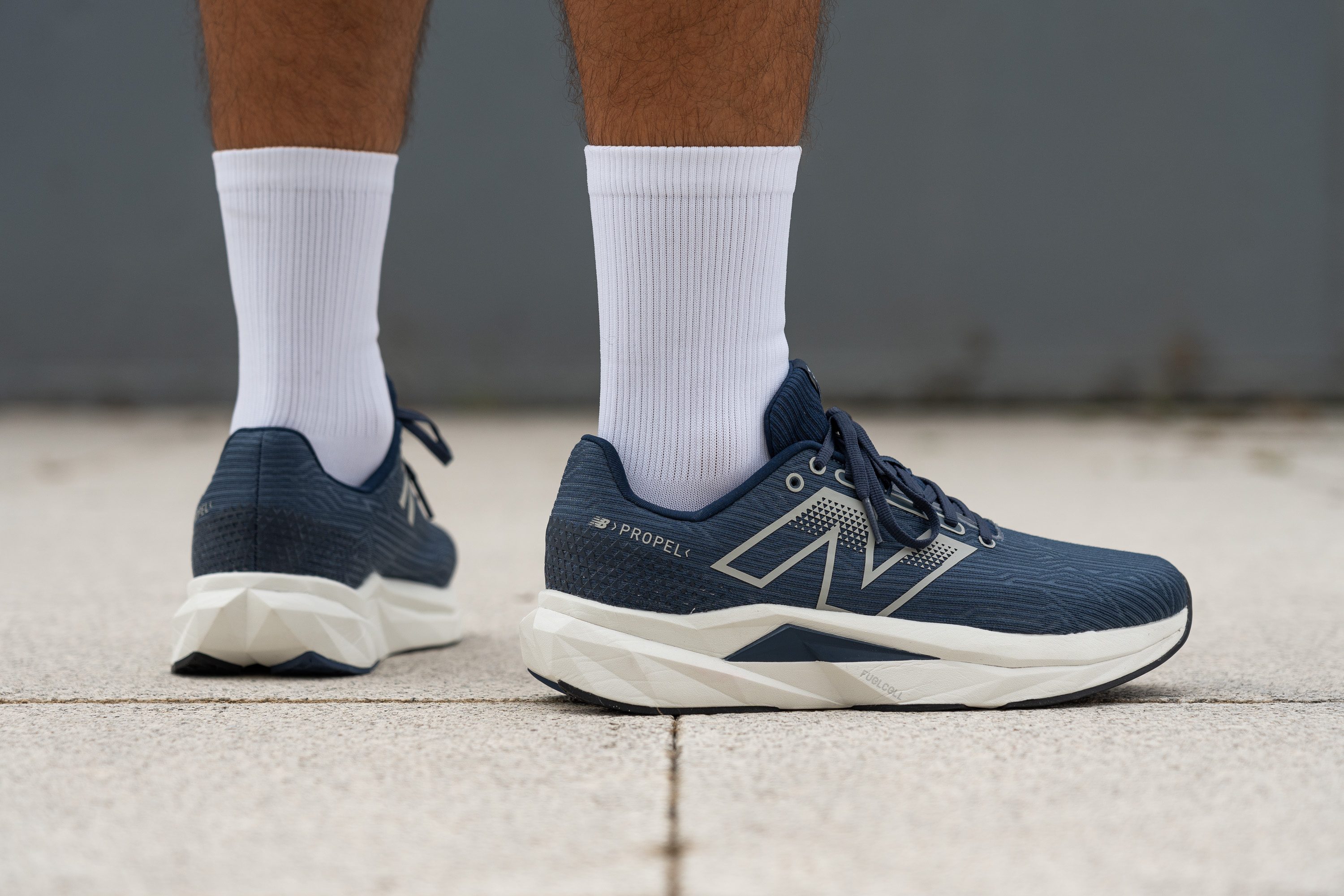
| FuelCell Propel v5 | Ninguno |

